Want to create or adapt books like this? Learn more about how Pressbooks supports open publishing practices.

23 How to Quote Song Lyrics in an Essay in APA Style
When writing essays in fields like music education, psychology, sociology, or other disciplines that may analyze song lyrics, you’ll often need to incorporate direct quotations or paraphrases to support your arguments and deepen your analysis. Understanding how to properly attribute these sources is essential to both academic integrity and effectively guiding your reader back to the original work. The American Psychological Association (APA) style provides the framework for formatting these citations while ensuring you give credit where credit is due.
Additionally, if you find yourself overwhelmed with the task of incorporating citations or formatting your paper according to APA guidelines, consider seeking assistance and ask professionals to do my paper on DoMyEssay to ensure accuracy and adherence to academic standards.
While there’s no single section in the APA manual devoted entirely to musical sources, you can intelligently adapt the principles for citing various source formats to fit this particular purpose. This involves a careful understanding of both APA’s conventions and the unique nature of musical works, where elements like composer, lyricist, performer, and the date of a particular release all contribute to the full picture.
In-Text Citations
Short Quotations : Integrate shorter lyrical excerpts directly into your text using quotation marks, providing a seamless flow within your writing and allowing the lyrics to speak directly to the reader. Separate line breaks with a single forward slash ( / ) and stanza breaks with two ( // ).
Joni Mitchell explores themes of freedom and constraint in her song “Big Yellow Taxi,” where she poignantly sings, “They paved paradise / And put up a parking lot” (Mitchell, 1970, track 4).
This technique lets the song’s imagery resonate clearly, strengthening your argument by using the artist’s own words as direct evidence. Furthermore, short quotations can be particularly impactful when they capture a powerful metaphor or a striking turn of phrase unique to the songwriter.
The bitter irony of “Don’t it always seem to go / That you don’t know what you’ve got ’til it’s gone” (Mitchell, 1970, track 4) underscores the song’s larger message about the fleeting nature of what we take for granted.
Block Quotations : For lengthier lyrical segments (typically four lines or more), set them apart as block quotations to emphasize their significance, help with visual clarity, and signify a deeper level of analysis. Indent the entire block from your main text. Consider this example:
They took all the trees
Put ’em in a tree museum
And they charged the people
A dollar and a half just to see ’em
(Mitchell, 1970, track 4)
By using a block quotation, you invite the reader to pause and carefully consider the extended lyrical passage, potentially uncovering deeper meanings, nuances, or its connection to the larger themes of your work. Block quotations can also highlight shifts in tone within a song or reveal the development of an idea across several verses. In Mitchell’s case, the block quote emphasizes the absurdity and commercialization of a world where nature is commodified, adding a layer of social commentary to the environmental focus of “Big Yellow Taxi.”
Citation Components : An in-text citation for song lyrics generally includes the songwriter(s) last name, copyright year, and either track number (for recordings) or page/line number (for printed scores). For example, a direct quotation from “Big Yellow Taxi” would be cited as (Mitchell, 1970, track 4). Paraphrases follow the regular APA pattern of (Author, Year), allowing you to rephrase the song’s message in your own words while still giving credit to the original idea. Remember that consistency in your citations adds a layer of professionalism and clarity to your essay writing , demonstrating your respect for intellectual property and guiding your reader effectively.
Reference List Entries
Your reference list, found at the end of your essay, provides a comprehensive and detailed guide to all the sources you’ve used. For song lyrics, this is where you meticulously list full publication information, allowing a reader to easily locate the exact music you analyzed. Here’s the basic structure, with examples and additional considerations:
Recorded Music : Start with the songwriter(s), copyright year, song title, and recording artist. Then, specify the album title, medium of the recording (vinyl, CD, digital, etc.), location of the record label, and the label itself.
Mitchell, J. (1970). Big Yellow Taxi [Recorded by Joni Mitchell]. On Ladies of the Canyon [LP record]. Burbank, CA: Reprise Records.
If the songwriter and recording artist are the same, you can omit the bracketed “[Recorded by…]” portion. Sometimes, you might need to differentiate between various editions or re-releases of an album, especially if bonus tracks or alternate versions are involved. Since different versions could contain lyrical changes, it’s important to be detailed to ensure a reader can locate the precise source you used. Also, be aware that original publication dates and recent re-releases can differ, so make sure to list the date relevant to the version you’re citing.
Printed Scores : For printed sheet music, whether it’s a full score or a simplified arrangement, focus on the publication details. List the songwriter(s), year of publication, song title, the type of score (vocal, instrumental, choral, etc. – if relevant), the city and state where the publisher is located, and the publisher’s name.
Dylan, B. (1963). Blowin’ in the Wind [Vocal score]. New York, NY: Warner Bros. Publications.
Printed scores can vary widely, from simple piano-and-vocal arrangements to comprehensive orchestral scores. Specifying the score type clarifies the exact version you used for analysis and can be particularly helpful if your arguments focus on instrumentation, harmonies, or other musical elements beyond just the lyrics themselves. Additionally, some scores include notes on historical context or performance practice relevant to specific genres or time periods, giving you additional insights for your analysis.
With a bit of careful attention and by understanding the core principles of APA, you can successfully integrate song lyrics into your academic writing, giving proper credit, strengthening your analysis, and enhancing the overall scholarly impact of your work!
Articles Blog Copyright © by mahmed. All Rights Reserved.
Share This Book
- PRO Courses Guides New Tech Help Pro Expert Videos About wikiHow Pro Upgrade Sign In
- EDIT Edit this Article
- EXPLORE Tech Help Pro About Us Random Article Quizzes Request a New Article Community Dashboard This Or That Game Popular Categories Arts and Entertainment Artwork Books Movies Computers and Electronics Computers Phone Skills Technology Hacks Health Men's Health Mental Health Women's Health Relationships Dating Love Relationship Issues Hobbies and Crafts Crafts Drawing Games Education & Communication Communication Skills Personal Development Studying Personal Care and Style Fashion Hair Care Personal Hygiene Youth Personal Care School Stuff Dating All Categories Arts and Entertainment Finance and Business Home and Garden Relationship Quizzes Cars & Other Vehicles Food and Entertaining Personal Care and Style Sports and Fitness Computers and Electronics Health Pets and Animals Travel Education & Communication Hobbies and Crafts Philosophy and Religion Work World Family Life Holidays and Traditions Relationships Youth
- Browse Articles
- Learn Something New
- Quizzes Hot
- This Or That Game New
- Train Your Brain
- Explore More
- Support wikiHow
- About wikiHow
- Log in / Sign up
- Arts and Entertainment
How to Quote a Song in a Paper (with Formatting & Examples)
Last Updated: April 17, 2024 References
This article was co-authored by Marissa Levis and by wikiHow staff writer, Jennifer Mueller, JD . Marissa Levis is an English Teacher in the Morris County Vocational School District. She previously worked as an English director at a tutoring center that caters to students in elementary and middle school. She is an expert in creating a curriculum that helps students advance their skills in secondary-level English, focusing on MLA formatting, reading comprehension, writing skills, editing and proofreading, literary analysis, standardized test preparation, and journalism topics. Marissa received her Master of Arts in Teaching from Fairleigh Dickinson University. There are 7 references cited in this article, which can be found at the bottom of the page. This article has been viewed 318,714 times.
Depending on the type of paper you're writing, you may need to use a song as a reference – either a specific recording, or the composition of the song itself. The format of your citation will be somewhat different depending on whether you are using Modern Language Association (MLA) style, American Psychological Association (APA) style, or the format in the Chicago Manual of Style. You'll also need a brief, in-text citation to point the reader to the more complete citation at the end of your work. [1] X Research source

- The performer could be a single individual or a band. If you're using the name of a single person, use "last name, first name" format.
- For example: Knowles-Carter, Beyoncé.

- If there are multiple writers, list them all in the order they appear in the copyright information for the song. If the song has lyrics, there may be both a composer and a lyricist.
- For example: Knowles-Carter, Beyoncé and James Blake.

- For example: Knowles-Carter, Beyoncé and James Blake. "Freedom."

- For example: Knowles-Carter, Beyoncé and James Blake. "Freedom." Lemonade , Parkwood Entertainment, 2016.

- For example: Knowles-Carter, Beyoncé and James Blake. "Freedom." Lemonade , Parkwood Entertainment, 2016. Online, www.beyonce.com/album/lemonade-visual-album/, accessed January 9, 2017.

- Use the name you used in your full citation. Just use the first or primary name if there is more than one artist in the full citation. Include the title or a title phrase if you're citing more than one work by that artist.
- For example: (Knowles-Carter, "Freedom")

- For example: Knowles-Carter, B., & Blake, J.
- If there are multiple writers and their roles are identified, you can put these in parentheses after their names. For example: Knowles-Carter, B. (Lyricist), & Blake, J. (Composer).

- For example: Knowles-Carter, B., & Blake, J. (2016).

- You also may want to include the name of the performing artist if they are known by a stage name or are otherwise not immediately identifiable by their last name.
- For example: Knowles-Carter, B., & Blake, J. (2016). Freedom [Recorded by Beyoncé].

- For example: Knowles-Carter, B., & Blake, J. (2016). Freedom. On Lemonade [CD].

- Include state or country information if the city is not well-known. Otherwise, simply include the name of the city.
- For example: Knowles-Carter, B., & Blake, J. (2016). Freedom. On Lemonade [CD]. New York City: Parkwood Entertainment (2016).

- For example: (Knowles-Carter & Blake, 2016, track 10)
Using Chicago Style

- For example: Knowles-Carter, Beyoncé, and James Blake.

- For example: Knowles-Carter, Beyoncé, and James Blake. Freedom .
- If the performer of the song is someone different from the songwriters, include this information immediately after the title of the song or album by listing their first name and last name.
- If the performer is more important than the songwriter or composer, you may want to list their name first. Use your best judgment depending on the focus of your paper.

- If you can't find the recording number on the physical copy of the recording itself, look on www.discogs.com. Make sure you have the listing for the same recording as the one you're referencing.
- For example: Knowles-Carter, Beyoncé, and James Blake. Freedom . On Lemonade . Parkwood Entertainment, 88985336822, 2016. [11] X Research source

- For example: For example: Knowles-Carter, Beyoncé, and James Blake. Freedom . On Lemonade . Parkwood Entertainment, 88985336822, 2016, CD.

- For example: (Knowles-Carter 2016).
- To provide a pinpoint citation to a specific song, include the track number. For example: (Knowles-Carter 2016, track 10).
Community Q&A
- If you're using Chicago style, list audio recordings separately in a discography that is separate from your main bibliography. [14] X Research source Thanks Helpful 0 Not Helpful 0
- When you access music online, you may have difficulty finding the information you need for your citation. Try looking up the song on a website such as www.discogs.com, which will have publication information. [15] X Research source Thanks Helpful 0 Not Helpful 0

You Might Also Like

- ↑ http://pitt.libguides.com/citationhelp
- ↑ https://blog.apastyle.org/apastyle/2011/12/how-to-cite-recorded-music-in-apa-style.html
- ↑ http://www.ubishops.ca/wp-content/uploads/APAguide6thofficial.pdf
- ↑ http://libguides.depauw.edu/c.php?g=73436&p=472435
- ↑ https://www.discogs.com/Beyoncé-Lemonade/release/8486714
- ↑ http://www.press.uchicago.edu/books/turabian/turabian_citationguide.html
- ↑ http://www.easybib.com/guides/citation-guides/chicago-turabian/how-to-cite-a-musical-recording-chicago-turabian/
About This Article

To cite a song using APA, start by putting the last name of the songwriter or composer, followed by their initials. Then, add the copyright year in parenthesis, and the title of the song. Next, start a new sentence with the word “on,” followed by the italicized name of the album and the medium you heard it on. End the citation with the location, the name of the recording company, and the recording year. For more information on citing songs, including in-text citations for MLA and Chicago style, read on! Did this summary help you? Yes No
- Send fan mail to authors
Reader Success Stories
Jul 2, 2016
Did this article help you?

Featured Articles

Trending Articles

Watch Articles

- Terms of Use
- Privacy Policy
- Do Not Sell or Share My Info
- Not Selling Info
wikiHow Tech Help Pro:
Level up your tech skills and stay ahead of the curve
How do I cite song lyrics?
Note: This post relates to content in the eighth edition of the MLA Handbook . For up-to-date guidance, see the ninth edition of the MLA Handbook .
The way you cite song lyrics will vary depending on how you access them and how much information you include in the body of your essay.
If you cite song lyrics from a CD you listened to, you might simply refer to the song in your essay:
“You say you got a real solution,” the Beatles sing in “Revolution 1.”
You can then provide a works-cited-list entry for the album that contains the song. Follow the MLA format template : list the name of the performer or band as the author, the name of the album as the title of the source, the publisher, and the date. In the optional-element slot at the end of the entry, list the format:
Beatles. The Beatles . EMI Records, 1968. CD.
If you cite song lyrics from a booklet accompanying the CD, list a description in the “Title of source” slot and the name of the album as the title of the container:
Beatles. Booklet. The Beatles , EMI Records, 1968.
If you cite lyrics from a website, provide a description in place of the title. Then provide the name of the website, publication information for the site, and the URL:
Beatles. Lyrics to “Revolution 1.” Genius , 2017, genius.com/The-beatles-revolution-i-lyrics.
Home / Blog / Mastering the Art of How to Quote a Song in an Essay
Mastering the Art of How to Quote a Song in an Essay
Jennifer Livingstone

Introduction
In the realm of academic writing, the ability to effectively how to quote a song in an essay plays a pivotal role in enriching your text, offering depth and a unique perspective to your argument. Whether it’s how to quote a song lyric in an essay to underscore a point, evoke an emotional response, or how to quote a song title in an essay to reference cultural context, the integration of musical elements can significantly enhance the reader’s engagement with your work. This guide aims to demystify the process, providing a clear set of guidelines for accurately citing songs within your essays. From the nuances of incorporating lyrics to the technicalities of referencing song titles, understanding these principles ensures that your academic writing not only adheres to the highest standards of scholarly integrity but also captures the essence of the musical pieces that influence and inspire your thoughts.
Understanding the Purpose of Quoting a Song
Quoting a song in an academic essay serves several key purposes, each enhancing the depth and breadth of your analysis. Learning how to quote a song in an essay allows you to bolster your arguments or themes with the emotional power or cultural resonance of music. When you master how to quote a song lyric in an essay, you tap into a rich vein of emotional and intellectual material, providing vivid evidence or illustrative examples that support your claims in a uniquely compelling way. Furthermore, understanding how to quote a song title in an essay goes beyond mere citation; it invites readers to consider the cultural or historical significance of the song, connecting your work to broader dialogues within society. This approach not only enriches your essay but also positions your arguments within a larger cultural and historical context, demonstrating the multifaceted impact of music on human experience.
Preparing to Quote a Song
Before incorporating a musical piece into your essay, it’s imperative to navigate the intricacies of how to quote a song in an essay with precision. The initial step involves meticulously identifying the relevant portion of the song that aligns with your discussion or argument. This selection process is critical as it ensures that the excerpt directly contributes to reinforcing your thesis or enriching your analysis.
Contextualizing the song for your audience is another vital aspect. When deliberating on how to quote a song lyric in an essay, providing background about the song or artist can offer valuable insight into its intended message or cultural impact, making your argument more persuasive. This context helps bridge any gaps between the reader’s knowledge and the significance of the lyrics within your essay’s framework.
Furthermore, the adherence to formatting guidelines, such as how to quote a song in an essay MLA, underscores the importance of academic integrity while lending credibility to your work. Whether you’re quoting a song lyric or citing its title, following the Modern Language Association (MLA) guidelines ensures that your citations are properly structured and recognized.
Ultimately, ensuring that each quote supports your essay’s thesis or main idea is paramount. This careful integration of how to quote song lyrics in an essay not only enhances your argumentation but also enriches the reader’s understanding, making your essay a more compelling and informative read.
Guidelines for Quoting a Song
When incorporating music into your writing, understanding how to quote a song in an essay MLA format is crucial for maintaining academic integrity. Begin by italicizing song titles and capitalizing the initial letters of each word. Artist names should be presented in their standard form. For in-text citations, include the artist’s last name and the song title in parentheses. For instance: (Bowie, “Space Oddity”).
In the Works Cited page, the entry should list the artist’s name, the title of the song in italics, the album name as the container, followed by publication details and the format. An example would look like: Bowie, David. “Space Oddity.” David Bowie, 1969, CD.
Adhering to these guidelines ensures that how to quote a song in an essay aligns with MLA standards, providing a clear and concise method for referencing songs in your scholarly work.
In APA format, quoting a song involves specific guidelines that ensure clarity and consistency across academic writing. When addressing how to quote a song in an essay or how to quote a song lyric in an essay using APA style, start by presenting song titles in sentence case, using quotation marks. Artist names should be written in full, without alterations.
For in-text citations, include the artist’s last name and the year of the song’s release in parentheses, for example: (Dylan, 1963). If quoting lyrics, also include a timestamp to indicate the exact part of the song, like (Dylan, 1963, 1:15).
In the References list, the entry should format as follows: Artist’s Last Name, First Initial. (Year). Song title [Song]. On Album Title. Publisher. For example: Dylan, B. (1963). Blowin’ in the Wind [Song]. On The Freewheelin’ Bob Dylan. Columbia.
Adhering to these APA guidelines ensures your citations are properly formatted, offering a clear reference for readers to follow when you quote a song or its lyrics in an essay.
Chicago Style
When employing Chicago style in your essay, the approach to how to quote a song in an essay or how to quote a song lyric in an essay integrates a nuanced citation method. Song titles should be quoted, with artist names presented in their full form without alterations.
For footnote or endnote citations, you format them by including the artist’s name, song title in quotation marks, album name in italics, year of release, and format type. An example would look like: 1. Artist Name, “Song Title,” Album Name, Year, Format.
In the bibliography, the entry should be arranged as follows: Artist’s Last Name, First Name. “Song Title.” Album Name. Year. Format. For instance: Dylan, Bob. “Blowin’ in the Wind.” The Freewheelin’ Bob Dylan. 1963. CD.
This Chicago style formatting ensures that quoting a song or its lyrics in your essay is clear, precise, and adheres to academic standards, providing a structured way for readers to locate the original source material.
Incorporating Song Quotes in Your Essay
Incorporating song quotes into your essay requires a seamless approach to ensure the text flows naturally. When how to quote a song in an essay or how to quote a song lyric in an essay, using signal phrases such as “According to [Artist Name]” or “[Artist Name] sings” can smoothly introduce the quote into your narrative. This method not only credits the original artist but also prepares the reader for the integration of external content.
After presenting the quote, it’s crucial to delve into its significance within your analysis. Discuss how the lyrics or the title enhance your argument, contribute to thematic development, or illuminate the subject matter from a unique perspective. This step is vital in demonstrating the relevance of the song quote to your essay’s broader discussion, thereby enriching the reader’s understanding and engagement with your work.
By thoughtfully integrating song quotes and articulating their importance, you bridge the gap between musical expression and academic analysis, offering a richer, more textured exploration of your essay’s themes.
Legal and Ethical Considerations
Navigating the legal and ethical landscape is paramount when how to quote a song in an essay or how to quote song lyrics in an essay. Understanding copyright laws is crucial to ensure that your use of song lyrics respects the intellectual property rights of artists and songwriters. When considering how to quote a song lyric in an essay or how to quote lyrics from a song in an essay, it’s important to adhere to the principles of fair use. This doctrine allows for the use of copyrighted material under certain conditions, such as for commentary, criticism, or educational purposes.
Best practices include quoting only the necessary amount of lyrics to support your argument or analysis and always providing appropriate attribution to the original artist. Furthermore, when quoting song lyrics or titles, ensure your usage falls within the guidelines of fair use by contributing original commentary or analysis that transforms the original work in a meaningful way.
By adhering to these legal and ethical considerations, you can ethically incorporate song quotes into your academic writing, enriching your essays while respecting the rights of creators.
In conclusion, mastering how to quote a song in an essay, how to quote a song lyric in an essay, how to quote song lyrics in an essay, and how to quote lyrics from a song in an essay is a valuable skill that enhances your academic writing. We’ve explored the importance of selecting relevant song portions, properly formatting citations across different styles, and the significance of integrating these quotes smoothly into your analysis. Remember, quoting songs not only enriches your essays by providing a diverse range of expressions and cultural references but also deepens the exploration of your topic.
I encourage you to utilize song quotes thoughtfully within your essays. This approach not only demonstrates your ability to engage with a variety of sources but also invites a deeper understanding and appreciation of the intricate ways in which music and text can intersect to reveal profound insights. Let the power of music amplify the impact of your words , and may your essays resonate with the richness and depth that song quotes can provide.
Get expert help on all your assignments
Other articles.

As school administrators, we treasure the occasions we spend interacting with st …

This particular statement was penned in an anonymous team evaluation more than a …

State Representative Beryl Amedée proudly confesses she educated her three sons …
Do You Use Quotation Marks or Italics for Song and Album Titles?
by Liz Bureman | 40 comments
Free Book Planning Course! Sign up for our 3-part book planning course and make your book writing easy . It expires soon, though, so don’t wait. Sign up here before the deadline!
Are you making any playlists for the new year? I love music, and when I write about a song or album, I know when to use quotation marks and when to use italics. Do you? Are song titles italicized? Let's discuss.
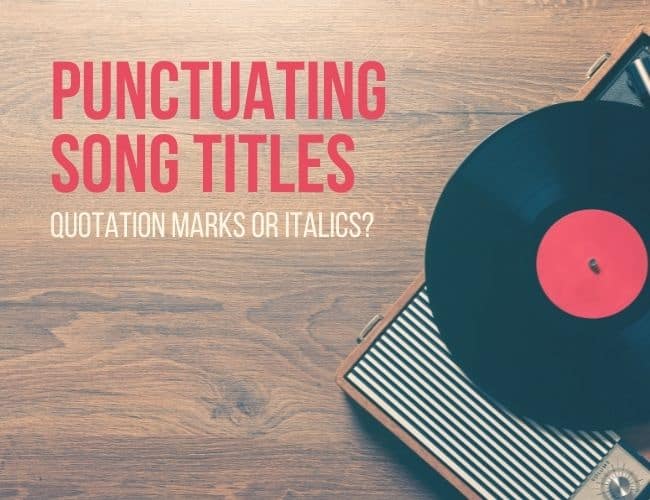
I love music. I've been teaching myself to play guitar, and I can stumble my way through four or five songs without wanting to poke holes in my eardrums, but my main appreciation for music is when other people play it. I'm an avid Spotify user, and I take a lot of pride in my ability to make kickass playlists. One of my girlfriends has even given me the green light to create her hypothetical wedding reception playlist.
Not everyone writes out the titles of their favorite songs or music albums regularly, so it's no surprise I sometimes hear people ask, “Are song titles italicized?”
The answer is no.
Here's how it works:
Song Titles in Quotation Marks
Song titles are always surrounded by quotation marks, like *NSYNC's “Bye Bye Bye,” or “A Whole New World” from Disney's Aladdin .
Anytime you write out the title of a song, you'll put that song title in quotation marks according to standard grammar rules. Think of a song as a shorter work like a short story. Short story titles are always in quotation marks.
Album Titles in Italics
Musical album titles, on the other hand, are always italicized. For example, while I will openly admit to loving Journey's power ballad song “Faithfully,” I think pretty much every song on their Greatest Hits album should be sung at karaoke nights across the country.
When you write out an album title, you'll put it in italics.
It may help to remember that the music album is a longer work, like a novel. Titles of books are also written in italics in most major style guides.
Are Song Titles Italicized in Classical Music?
Classical music isn't typically arranged into an album, per se, but the general rule still applies. The shorter songs and movements would be in quotation marks. If it is a full length longer composition, like a full sonata, concerto, or opera then use italics for titles indicating the full work.
For example: The aria “Der Hölle Rache” is probably the most famous piece in Mozart's opera The Magic Flute .
Other Italics Questions
Of course, lots more media have titles than just songs and albums. There are books , short stories, podcasts, TV shows, episodes . . . the list goes on and on. Want more italics advice? Check out our ultimate title-writing guide for answers to all your italics conundrums.
Do you have any tricks for remembering when to use quotes and when to use italics? Tell us in the comments .
Imagine your favorite musical artist or group is discussing the set list for an upcoming show that has the potential to go viral. What will they play to appeal to fans, old and new?
Take fifteen minutes and write about the hypothetical conversation the ladies of the group had in determining the songs they would play for the show. Post your conversation in the Pro Practice Workshop , and leave notes for other writers brave enough to publish as well. Not a part of a writing community yet? Join us !
Liz Bureman
Liz Bureman has a more-than-healthy interest in proper grammatical structure, accurate spelling, and the underappreciated semicolon. When she's not diagramming sentences and reading blogs about how terribly written the Twilight series is, she edits for the Write Practice, causes trouble in Denver, and plays guitar very slowly and poorly. You can follow her on Twitter (@epbure), where she tweets more about music of the mid-90s than writing.
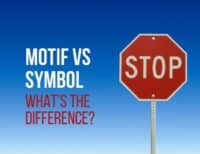
40 Comments
It was blowing up a storm when we started to practice, but that don’t stop Effie. He thinks you gotta play no matter what. If the tornado sirens go off down in town and one of our old ladies calls to tell us so, he’ll say, “Ya’ll can go get in your fraidey holes if you want to. Me, I’m playing my fiddle.”
Well, you can’t go to the storm cellar with your tail between your legs, so we stay, me and Vander and Larry, even though Larry, who plays the washtub, lost his house in the tornado of ’96 and he shakes when the sky rumbles. And then Effie’ll start in on some song like “When The Roll Is Called Up Yonder,” just to put his spin on how things might turn out if a twister does find us.
So we’re playing, me on the bass, and we’re looking out the window, where you can see the sky turning the color of a two-day bruise, and Larry’s sweating and Vander’s got his eyes shut like he does when he plays mandolin, and Effie, truth be told, is a flat-out bully. So he’s getting the show list together and acting like everything’s business as usual.
“I think we should start with “Sitting On The Front Porch,” he says. Crowd pleaser, every time. And then, “Baby’s Little Shoes.” And then “Walking With Clementine” for the old folks. We’ll finish with “God Bless the U.S.A,” since the veteran’s home is bringing a bus.
Lightning is hitting closer, the sky like the Fourth of July. Larry’s done sat down, turned all pale as fresh milk. Larry’s a big man. He can’t button his overalls up all the way on the side, so when he doubles over and then falls out of the fold-up chair, none of us knows what to do.
“I ain’t doing mouth-to-mouth,” Effie says, while the rest of us are trying to right him.
Larry comes to soon enough, just as the hail starts.
“My new truck,” he says, and shakes his head. You know when people say you’re green at the gills? Well, Larry is.
All our trucks are parked outside, and all of ‘em are getting blasted. I see my old Dodge, the one I’ve had since May left me, the hail, big as cotton bols hitting it, and it makes me sick.
And then I remember Effie’s truck. His is in the carport. Well, sure it is, I think.
Vander, who preaches every other Sunday over in the Cavanaugh bottoms, says, “Shit fire,” and hits the wall. We are in the town hall of Rudy, a little Craftsman house donated by Mayor Giles Walker’s family when he passed, and the photos of the veterans shake when he does it.
The rain flashes down. Pounding everything, soaking through my back windshield that was shattered by the hail.
“Mercy sakes,” is all I can say.
Larry stands up, grabbing my arm to do it. He’s about as wide as he is tall, and he’s near about pulls me down.
“I’m off like a prom dress,” he says, “so don’t try to stop me.” And then he turns to Effie.
“You’re about as helpful as a boar with teats,” he says, you know that? You act like you’re the bread and butter of The Frog Bayou Boys.” He points to me. “But Columbus here, he might not play as good as you like, but he’s the one got the news folks out here to do that story calling us the best band in the River Valley. And he books every show, and when you get drunk, let’s just be honest here, when you get drunk, you can’t play worth shit.”
Effie came after Larry. Effie’s a little action figure of a man, but he fights mean, and it took Vander and me to stop him.
We were holding Effie by his scrawny arms, and he was kicking, his cowboy boots flying off the wood floor, so that we were mostly holding him up.
“You are a liar and a snake,” Larry Brammel. “A liar and a snake. You’re going to go straight to hell with gasoline drawers on, and when you do, I’ll play my fiddle on your grave.”
Vander stepped in. “Ya’ll cut it out. Nobody’s dying,” he said. “Effie,” he said, and pointed, “you and Larry need to quit showing your butts. That show on Saturday pays $100, plus they feed us. We ain’t had a show like that since we played that Red, White and Bluegrass gig for the rich ladies who wanted to dress up in thousand dollar boots and wear tight jeans and drink beer in front of their husbands.”
And then Vander bowed up, like I never seen him do before. “And Effie, we ain’t playing “Walking With Clementine.” The old folks can do without it for one dang night. I wrote my own song and I want to sing it. It’s called “She Broke My Heart And Stole My Wallet.” That’ll get ‘em going,” Vander said.
I’d known Vander thirty-two years, and that was the first I’d heard of his songwriting. His new girlfriend, the one who brought over the Mexican casserole when Vander’s wife died, was likely the inspiration for this new tune.
Word was, she was over in Branson now, hooked up with a cowboy singer who wore a Bolo tie and colored his hair.
Effie face was red. He looked hotter than blue blazes, like he might catch fire at any minute. And then he backed down, his shoulders falling. He looked at all of us, me and Larry and Vander, and then he said, “Fine, that’s fine with me. I been carrying you ya-hoos for way too long.”
Larry cuffed him on the arm, and then they shook hands, and the rain fell, and the thunder roared, but nobody moved for a minute.
Effie had a bottle in his fiddle case, and he went to get it. “Ain’t nobody driving till the rain stops,” he said. “And that includes you, Larry.”
And then we sat down, and passed the bottle until Vander started singing. “I loved a girl from Minnesota. Loved her with a passion true. And then stole my dad burn wallet, took it out and followed you. You must be a handsome cowboy. You must look like Johnny Cash. But when I find my little Cindy, I will tell her that she’s trash.”
We were laughing then. And Effie brought out his fiddle, and I picked up my bass, and Vander his mandolin. Larry drug out the washtub, and we got back at it, the Frog Bayou Boys, just as good as new.
Wow, Marla, if you’re not from those parts then you’ve got one wild imagination, girl! Well done, and then some. The phrasing, the way you used the anarchic terminology, and even the names were spot on, perfect. Beautiful!
Thank you, Yvette. I can’t take credit. I live with these people and these voices. It’s like music to me. We get teased A LOT but I wouldn’t trade the dialect or the cadence for anything.
I love this!!! The gig, the music, the attitudes. And the dialogue is genuine county-folk! Good work, Marla!
You’re so nice. I love the music we have in the South, the twangy, ball-your-eyes-out stuff that connects us all and makes us feel less alone. And I know men like these, I’ve heard them play, so writing this was easy.
Great writing Marla. I agree with the others you really have that dialect (which I’m also familiar with) down pat.
Thank you, Mariaanne. Where are you from?
I live in Lynchburg Va now but was originally from Norfolk. The accent you are writing sounds like an Appalachian accent to me. Where are you from?
Mariaanne, I live in Lynchburg, too! We have two crit groups here and would love for you to join us. Email me at charmainetdavis at yahoo dot com.
Charmaine – I can’t believe it. Will you please email me? [email protected]. I’d love to join you. When and where do you meet?
I had a playlist for my wedding that included “One Day My Prince Will Come” and “If You Wish Upon a Star.” Since I’m still single, it’s “The Impossible Dream.”
It depends if you’re writing for American or British publications. In the US, song titles are always “Jumping Jack Flash” but in the UK they’re often ‘Midnight Rambler’. It’s caused me no end of headaches writing for both.
They punctuate dialogue differently in the UK too don’t they? I think the way they do it makes more sense actually but I don’t like to think about it too much or I get confused. I imagine it’s hard to write both ways.
Agreed. The UK punctuates more logically. I had points knocked off of college papers for employing that punctuation, & tried to defend it with no success. Ha! Punctuation Wars – my kind of rebellion!
I’m in the US. In high school, I got marked off for spelling aluminum as “aluminium.” The teacher actually asked if I was British.
Ten years later, I’d still argue I was technically correct.
sorry so long to reply. Yet, after recent happenings, I can only hope that we can just get back to debating language. God Bless us All. Thanks for replying Eric Foster!!
Does also apply to other works that have a part/whole relationship? I’m thinking specifically of “short stories” and The Collection They Come in or “poems” and Chap Books.
I can’t make any italics work in this application, so I’ll indicate italics with [i] at the beginning and at the end of each title I intend to be italicized.
My practice:
The state-of-the-art bus pitched only slightly with the dips and rolls of Interstate 35 — not like those death-traps they used to ride in the ’40s and ’50s — on the way up to Fort Worth and Billy Bob’s. He walked down the aisle toward his stateroom with the practiced sea-legs of an old salt, noticing that his harp-player, Mickey, had gone to sleep and was droolin’ in his lap.
“HEY MICK YOUR FLY’S OPEN!” he barked in that sargeant’s voice he could assume on a moment’s notice. Mickey jumped awake and then amiably shot him the bird. He laughed in his baritone voice and walked on into his quarters.
Billy Bob’s. Let’s see — that crowd likes the ’70s stuff off the concept albums, sprinkled ’round the edges with the early Nashville songs. Let’s do, let’s do — he got his legal pad and licked the point of his stubby pencil — Let’s do “Bloody Mary Mornin'” and “Walkin'” from [i]Phases and Stages[i]. Follow that with “Hello Walls” from [i]And then I Wrote[i]. He sat before the big window and watched the country roll by, remembering. Remembering.
The world was a different place when I got started. I’m an extrememly lucky man, he thought. All the close shaves — I could easily have gone the way of Hank. All the little one-horse planes I’ve flown in, I also could have had the same end as Jim Reeves, or Patsy, God love ‘er.
Gotta do “Crazy” tonight in honor of Patsy. That’s another’un offa [i]And Then I Wrote[i]. Sold that’un for fifty dollars when my kids needed shoes, and I’d do it again too.
He picked up the old spanish guitar with the hole in it where his right hand had worn through the wood over the decades, and began to strum it. Key of E. Began to sing just a little bit, soft and low: “In___ the twighlight glow I see__ her . . .” And then stopped. All those years. All those songs. All those changes. Phases and stages.
Yes, I’m lucky, it’s still hard to believe just how lucky.
Gotta find a spot for “Blue Eyes” tonight too. [i]Red-Headed Stranger[i].
Sometimes, he realized, I look in the mirror and that’s who I see.
Wow! I love this. The part about the hole in the guitar is gold. And I love your main character. I’d go hear him, in a heartbeat.
Thank you all for your kind comments. The piece is about Willie Nelson, I just didn’t name him. All of the album and song titles are real, as is the hole in his guitar; just look closely the next time you see him playing on tv and you’ll see it. I had a lot of fun writing this!
I’ve always been amused by Willie’s “holy” guitar. He’s such a kook.
I forgot DISQUS doesn’t allow italics. Sorry about that John. Way to make it work 🙂
That was really well done John. It’s kind of sad to hear him thinking about old times but he seems to be a pretty happy guy overall. I like the hole in the guitar too as well as the guy drooling in his sleep. Gross but probably about right.
Good article. Quick and to the point. Thanks!
Not kickass playlists if they have Journey in them lol…
It will really depend on how are you going to use those kind of quotations in your writing but I what I have observed, this kind of thing was being used by most writing especially if when they emphasized a title on their writing.
I was going to ask about the title of a composition and the movements but after reading the program magazine I realized that italics are used for both.
I think I have been doing that correctly. I was worried.
Her hand twisted the edge of her shirt as the smell of sawdust filled the air. The crowd’s noises dimmed, her heart beat louder in her ears and her palms dampened as she climbed the stage stairs. Though she had practiced long hours she was nervous anticipating singing “China Girl” from John Cougar Mellancamp’s, (italics American Fool italics), album.
You should try djing. It’s easy if you can already make a good playlist. If you’re already a good selector, all you have to do is pre-cue the next song in your headphones then drop it on the 1. Really easy stuff. You can buy the app, djay, for ios devices and log in with your spotify account for access to your playlists and stuff. We need more female djs.
My first concert experience was of one that I would not easily forget, it was Summer Jam hosted by Hot 97. The concert had a majority of middle class rappers playing their hot singles. I came there for a select few: 50 Cent, Fabolous and Young Thug. The other performing artists were mainly for the female demographic, like Fetty Wap and Ty Dolla $ign. What I really enjoyed about this concert is they did not only play songs from this current generation, they reached out to other generations as well. The biggest example of this is seeing 50 Cent preform. He played hits from his Get Rich or Die Tryin’ album all the way up to his recent The Kanan Mixtape. I was going ballistic when I heard him preform a new track “I’m the Man” and decided to take us back to 2003 with “In da Club” immediately after. The artists I came for did not disappoint.
And if you are writing dialogue, I do not recall seeing two double quotation marks at end of dialogue. Maybe I am wrong. For instance, “Baby, you know I love Ted’s “Stranglehold,”” he fired back. I have seen a single followed by a double quotation at end of dialogue after the comma or period. So maybe that’s why the King’s English prefers single over double?
This saved my essay. Thanks Liz!
Dear Liz, I was looking for some advice about quote/italics for song/movie/book titles and got totally side-tracked by your Journey reference. When I rule the world, I promise you will get your wish. Journey will be piped directly into people’s heads so they can all become happier and more well rounded. Tee Hee. Keep up the good work. 😉
The Excavators play Brady Wilkenson’s 8th Birthday Bash!
This past Saturday afternoon was Brady Wilkensen’s birthday party, and he could think of no better live entertainment than his father’s heavy metal band, The Excavators. When Brady suggested the idea, his dad felt honored, albeit unsure whether the mothers of his son’s 8-year-old classmates and friends would appreciate the lyrical content of his band’s hits, especially “Rotting Flesh” and “Glory Hole” off their latest album (i) In it for the Lingue Hall. (i)
Instead of becoming the third grade parents’ worst nightmare, Mr. Wilkensen figured he’d tone things down quite a bit to become more palatable to the kids and their discerning parents. He got the members of the Excavators together, sure, but instead of “Rock My Grave,” the afternoon’s selections included “Punk Rock Teacher” and “All My Friends Headbang” off their pseudo EP (i) Songs for the Peanut Gallery (i).
The party was to be held at Bringadown Hall, in a posh country club in the suburb where Brady and his family resided. Mr. Wilkenson figured that his band had better revamp their look for this gig as well. Instead of their usual studs and leather, the Excavators came to the party dressed in red t-shirts, jeans, and letter jackets that evoked high school in the ’70s.
The band decided to even craft some improv tunes on the subject of the party’s goings-on and present them to Brady and his guests at the end of the show. “Pizza on my Face, What a Disgrace!” did so well among Brady’s friends that the Excavators decided to include it on their upcoming album, (i) Smells like Burnt Crust (i).
Rather than the utter disgust that would have been sure to follow had the band performed its signature material, (i) Songs for the Peanut Gallery (i) was lauded by parents and children alike as a “too-cool-for-school crowd pleaser.”
Brady bragged from that day forward that he had the coolest dad in town, and his 8th birthday party became the epitome of birthday bash success in the eyes of the entirety of Willten Elementary School’s student body, whether they’d attended the party or heard about it from a friend-of-a-friend’s brother.
“Whew,” Mr. Wilkenson said to his wife when the party was over, “that was a good call!”
Thanks Liz, good info!
Here’s my sentence in question: “They just ran out the back door singing it to the tune of ‘Row, Row, Row Your Boat’.” It is dialog, and according to what I’m reading, I should use double quotes around the song and at the end of the sentence. Correct?
thanks for the help!
Trackbacks/Pingbacks
- Links of the week #32 « S. J. Maylee - [...] Liz Bureman at The Write Practice : Do You Use Quotation Marks or Italics for Song and Album Titles? [...]
- How to Write Funnier With Anachronisms - [...] grammar is important. So is sentence structure and punctuation and all that great stuff. But it’s also important to…
Submit a Comment Cancel reply
Your email address will not be published. Required fields are marked *
Submit Comment
Join over 450,000 readers who are saying YES to practice. You’ll also get a free copy of our eBook 14 Prompts :
Popular Resources
Book Writing Tips & Guides Creativity & Inspiration Tips Writing Prompts Grammar & Vocab Resources Best Book Writing Software ProWritingAid Review Writing Teacher Resources Publisher Rocket Review Scrivener Review Gifts for Writers
Books By Our Writers

You've got it! Just us where to send your guide.
Enter your email to get our free 10-step guide to becoming a writer.
You've got it! Just us where to send your book.
Enter your first name and email to get our free book, 14 Prompts.
Want to Get Published?
Enter your email to get our free interactive checklist to writing and publishing a book.
- Great Tech Gifts for Any Occasion
- The Best Gadgets for The Beach or Pool
Proper Formatting of Song Titles in Written Documents
Learn when to use italics and quotation marks to write clearly
:max_bytes(150000):strip_icc():format(webp)/WorkBadgePhoto-61c0b98ef5a74e4a85851a8f706dbd65.jpg)
- Animation & Video
What to Know
- Refer to the style guide specified by your employer, client, or teacher.
- In the absence of a style guide, the general rule is to use quotation marks for song titles and italicize CD or album titles.
- Don't use underlining in place of italics unless you are using a typewriter or writing titles by hand.
This article explains the proper formatting of song titles in written documents and includes examples.
How to Format Song Titles in Written Documents
For matters of style when punctuating and formatting titles of any kind, turn first to the style guide prescribed by your employer, client, or teacher. In the absence of a style guide, use the following guidelines:
- Put quotation marks around song titles : For best appearance in professionally typeset material, use proper typographical quote marks and apostrophes ( curly quotes ).
- Set CD/album titles in italics : In typeset material, watch out for fake italics . That's not a grammar rule but it is a good design and printing rule.
- Do not use underlining (in place of italics) unless you're using a typewriter or writing titles by hand.
In desktop publishing and word processing software, create character styles to quickly format song titles and other types of titles used throughout a document.
Example References to Song Titles and Albums
Here are two examples of text that includes song titles and album titles:
- Trace Adkins' first #1 single “(This Ain’t) No Thinkin’ Thing” is from his 1997 CD Dreamin’ Out Loud .
- The title cut from Toby Keith’s How Do You Like Me Now? was the most-played country song of 2000. Other favorites from the same album include “You Shouldn’t Kiss Me Like That” and “Country Comes to Town.”
When the song/album is the same : In the second example, although “ How Do You Like Me Now? ” is the song title, it is also the album title and in that context is treated as the album title, using italics. It would be just as correct to write: My favorite song on the How Do You Like Me Now? album is “How Do You Like Me Now?”
Punctuation in titles : When a song title ends in a question mark, exclamation point, or other punctuation, that punctuation goes inside the quotation marks because it's part of the song title. The beginning portion of the Adkins song title in parentheses is contained in the quotation marks the same as the other part of the song title.
Get the Latest Tech News Delivered Every Day
- Underlining in a Plain Text Email
- How to Use APA Format in Google Docs
- Why Is Song Metadata Important?
- How to Use Quotation Marks on Search Engines
- How to Do a Block Quote in Google Docs
- Writing in All Caps Is Like Shouting
- How to Type Curly Quotes and Curly Apostrophes
- Using Markdown in Email to Send Plain Text Messages
- How to Put iTunes Playlist Songs in the Right Order
- How to Add Rich Formatting to Text in iPhone Mail
- How to Identify Songs in YouTube Videos
- How to Use Bold, Italics and Strikethrough in WhatsApp Messages
- Changing the Appearance of Quotation Marks in Microsoft Word
- How to Use the Concatenate Function in Google Sheets
- How to Highlight Text in Yahoo Mail Messages
- How to Do MLA Format on Google Docs
- How to Cite
- Language & Lit
- Rhyme & Rhythm
- The Rewrite
- Search Glass
How to Incorporate Lyrics Into an Essay
Lyrics can be effective tools in an essay. You may want to cite lyrics, because a song writer says something in an eloquent way, or the excerpt solidifies a point you’re trying to make. You are allowed to quote a portion of a song under the fair use doctrine of the United States copyright law, but the law doesn’t specify exactly how many words or what percentage of a song you can use. You can use a limited portion of a song for your research paper, but it must be acknowledged though in-text citations and a listing in your works cited or reference page.
Quotations and In-Text Citations
When incorporating lyrics into an essay, put the lyrics inside quotation marks. Short quotations can be integrated into a sentence, such as, “In the song ‘Hey Jude,’ the Beatles sing…” followed by the lyrics in quotation marks.
Long quotations, or those that are four lines or longer, need to be set off in a block quote, where you indent the entire quote from the paragraph above it. To cite the lyrics in Modern Language Association format, write the artists’ name in parentheses, such as (The Beatles), followed by the ending punctuation.
To cite in American Psychological Association format, include the artist, copyright date and track number in parentheses, such as (The Beatles, 1968, track 1). Note the comma between the artist and year and between the year and track number.
Reference List
Include the details of the recording in your works cited or references page. In MLA format, include the artist’s name, song title, album name, name of the recording manufacturer, publication date and the sound recording medium, for example:
The Beatles. “Hey Jude.” Hey Jude: The U. S. Album (italicized). Capitol, 2014. CD.
Citing this recording in APA style is slightly different, so follow the example:
The Beatles. (2014). Hey Jude. On Hey Jude: The U. S. Album (italicize the album name) [CD]. Los Angeles: Capitol (Recorded 1968).
- Purdue Online Writing Lab: In-Text Citations: The Basics
- Williams College Libraries: Media
- U. S. Copyright Office: Can I Use Someone Else's Work? Can Someone Else Use Mine?
- U. S. Copyright Office: Fair Use
- Purdue Online Writing Lab: MLA Works Cited: Other Common Sources
- Purdue Online Writing Lab: Reference List: Other Non-Print Sources
Cara Batema is a musician, teacher and writer who specializes in early childhood, special needs and psychology. Since 2010, Batema has been an active writer in the fields of education, parenting, science and health. She holds a bachelor's degree in music therapy and creative writing.
Purdue Online Writing Lab Purdue OWL® College of Liberal Arts
MLA Formatting Quotations

Welcome to the Purdue OWL
This page is brought to you by the OWL at Purdue University. When printing this page, you must include the entire legal notice.
Copyright ©1995-2018 by The Writing Lab & The OWL at Purdue and Purdue University. All rights reserved. This material may not be published, reproduced, broadcast, rewritten, or redistributed without permission. Use of this site constitutes acceptance of our terms and conditions of fair use.
When you directly quote the works of others in your paper, you will format quotations differently depending on their length. Below are some basic guidelines for incorporating quotations into your paper. Please note that all pages in MLA should be double-spaced .
Short quotations
To indicate short quotations (four typed lines or fewer of prose or three lines of verse) in your text, enclose the quotation within double quotation marks. Provide the author and specific page number (in the case of verse, provide line numbers) in the in-text citation, and include a complete reference on the Works Cited page. Punctuation marks such as periods, commas, and semicolons should appear after the parenthetical citation.
Question marks and exclamation points should appear within the quotation marks if they are a part of the quoted passage, but after the parenthetical citation if they are a part of your text.
For example, when quoting short passages of prose, use the following examples:
When using short (fewer than three lines of verse) quotations from poetry, mark breaks in verse with a slash, ( / ), at the end of each line of verse (a space should precede and follow the slash). If a stanza break occurs during the quotation, use a double slash ( // ).
Long quotations
For quotations that are more than four lines of prose or three lines of verse, place quotations in a free-standing block of text and omit quotation marks. Start the quotation on a new line, with the entire quote indented 1/2 inch from the left margin while maintaining double-spacing. Your parenthetical citation should come after the closing punctuation mark . When quoting verse, maintain original line breaks. (You should maintain double-spacing throughout your essay.)
For example, when citing more than four lines of prose, use the following examples :
Nelly Dean treats Heathcliff poorly and dehumanizes him throughout her narration: They entirely refused to have it in bed with them, or even in their room, and I had no more sense, so, I put it on the landing of the stairs, hoping it would be gone on the morrow. By chance, or else attracted by hearing his voice, it crept to Mr. Earnshaw's door, and there he found it on quitting his chamber. Inquiries were made as to how it got there; I was obliged to confess, and in recompense for my cowardice and inhumanity was sent out of the house. (Bronte 78)
When citing long sections of poetry (four lines of verse or more), keep formatting as close to the original as possible.
In his poem "My Papa's Waltz," Theodore Roethke explores his childhood with his father:
The whiskey on your breath Could make a small boy dizzy; But I hung on like death: Such waltzing was not easy. We Romped until the pans Slid from the kitchen shelf; My mother's countenance Could not unfrown itself. (qtd. in Shrodes, Finestone, Shugrue 202)
When citing two or more paragraphs, use block quotation format, even if the passage from the paragraphs is less than four lines. If you cite more than one paragraph, the first line of the second paragraph should be indented an extra 1/4 inch to denote a new paragraph:
In "American Origins of the Writing-across-the-Curriculum Movement," David Russell argues,
Writing has been an issue in American secondary and higher education since papers and examinations came into wide use in the 1870s, eventually driving out formal recitation and oral examination. . . .
From its birth in the late nineteenth century, progressive education has wrestled with the conflict within industrial society between pressure to increase specialization of knowledge and of professional work (upholding disciplinary standards) and pressure to integrate more fully an ever-widening number of citizens into intellectually meaningful activity within mass society (promoting social equity). . . . (3)

Adding or omitting words in quotations
If you add a word or words in a quotation, you should put brackets around the words to indicate that they are not part of the original text:
If you omit a word or words from a quotation, you should indicate the deleted word or words by using ellipses, which are three periods ( . . . ) preceded and followed by a space. For example:
Please note that brackets are not needed around ellipses unless they would add clarity.
When omitting words from poetry quotations, use a standard three-period ellipses; however, when omitting one or more full lines of poetry, space several periods to about the length of a complete line in the poem:
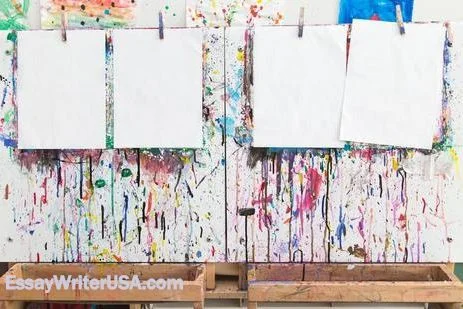
How to Quote a Song in an Essay
Lyrics are one of the most effective tools in an essay to express certain feelings, thoughts, and ideas. You may decide to cite lyrics if you see that the author of a song has created a great line that expresses your point perfectly.
It is like when you walk around, and have a bunch of thoughts in your head but have no idea how to express them on paper. And then all of a sudden… buzz… You hear a song that says it all! In just one or two sentences. You know the feeling, right? Well, this is exactly what you feel when you put song lyrics in an essay. The words that are written and sung in a song may be exactly what you need to add some flavor to the whole academic text.
However, you must follow the copyright and not use the whole song in your text. The good news is that there are no legal requirements about how many words you may use not to be convicted of plagiarism. Whenever you use some part of a song in your paper, do not forget to include in-text citations, a list of all citations, or a reference page. And you may sleep calmly – no one will ever say that you stole their words.
Page Contents
How to quote song lyrics in an essay: simple rules
There are different formats (MLA, APA, Harvard) and each one has its peculiarities. Although, each one requires a parenthetical citation (in-text) and a note in the reference list. Also, the way you cite lyrics in your paper may be different and depends on how you listen to a particular song as well as the amount of information you put in your text. For example, if you cite a song from a CD you listened to, you may refer to the song in the following way:
“The show must go on,” Queen sings in the self-titled song.
To quote the lyrics in MLA format, mention the artist’s name in parenthesis. For example, “In the lyrics to “The Show Must Go on” (Queen), it states that…” This is all you need to do.
However, when you use APA or Harvard format, there are slight differences. You must write the name of the singer, date, and track number in parenthesis, like this: (Queen, 1991, track 12).
As you see, when you integrate short citations into your text, you must use quotation marks. Longer quotations (could be several lines) must be written in a block quote. Don’t forget to indent the citation from the paragraph above it.
How to quote lyrics in a reference list
After in-text quotations, you must make a note in the reference list for the album which contains the song you used in your academic text. If you choose to stick to the MLA requirements, write the name of a performer first, then mention the name of the album, the publisher, and the date. You may also want to list the format:
Queen. Innuendo. Metropolis Studios, 1991. CD.
If you use lyrics from a booklet that goes together with the CD, include this information in the “Title of source” and the album’s name:
Queen. Booklet. Innuendo, Metropolis Studios, 1991.
How to quote a song if you pick it up on a website? It is also simple. Mention this in place of the title. Then give the name of the website, information about the publication for this site, and its URL:
Queen. Lyrics to “The show must go on”. Genius, 2018, genius.com/Queen-the-show-must-go-on-lyrics.
Quoting the song in APA and Harvard format will be a little bit different and you must provide the copyright date:
Queen. (1991). Innuendo. [CD]. London: Metropolis Studios (Recorded 1990).
Quotation marks or Italics?
When you include lines from songs in your paper, you may ask Do you italicize song lyrics in an essay? Or you may be curious about how to write a song title in an essay. Well, there are simple rules to remember: titles of songs must be always surrounded by quotation marks while CD and album titles are always italicized. See the examples above.
Also, note that if the title of a song ends with a question mark or exclamation point, they should go inside of the quotation marks since they are a part of that title. If the punctuation is not a part of the song title, it should go beyond the quotation marks.
Things to consider
There are several unwritten rules you must follow when you are quoting song lyrics in your paper.
- Stay away from clichés. These are “I hope you had the time of your life”, “We don’t need no education”, “You’ve got a friend in me”, “All you need is love” and so on.
- Paraphrase. Don’t you dare to include the whole song in your essay? Your professor might remember his best years reading 10,000 lines of Paradise Lost but most likely he will not understand why you decided to make him nostalgic. Pick several lines that describe your point the best and cite them.
- Appeal to the reader’s imagination. Any song is a melodic poem and therefore it should create some scenes in the readers’ heads. Cannot do that? Well, do not write lyrics in an essay, and better think of another way of describing your ideas. Using lyrics in your papers is not your strength.
Using wording from songs in your academic essay is a wonderful idea. However, make sure you cite them properly to make your paper professional.
Weaving Stories from Every Corner
- Entertainment
- Environment
Home > Music > How To Quote A Song
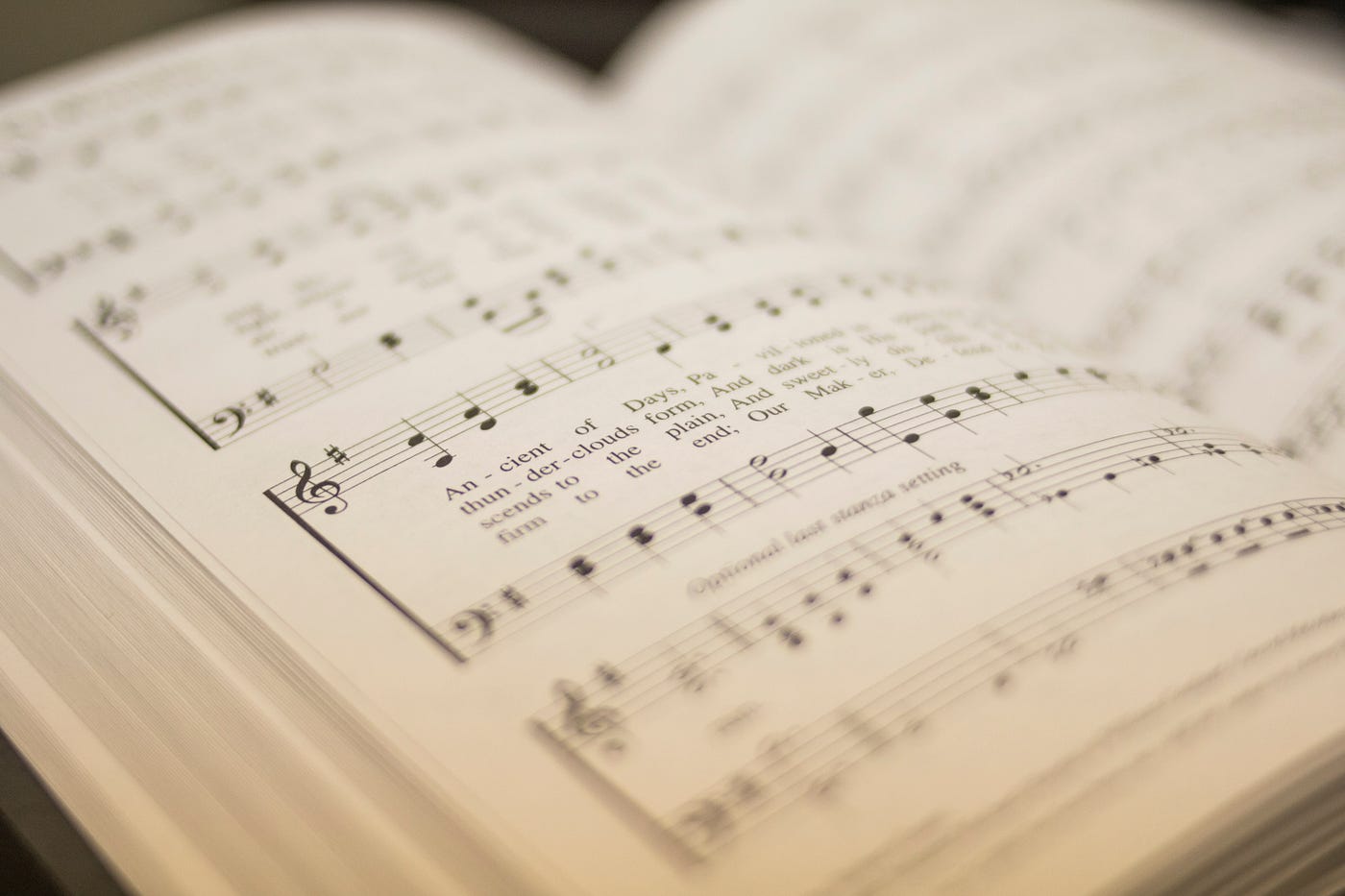
How To Quote A Song
Published: February 25, 2024
Written by: Talya Martindale
Learn how to properly quote a song and give credit to the artist. Find out the best practices for using song lyrics in your content.
(Many of the links in this article redirect to a specific reviewed product. Your purchase of these products through affiliate links helps to generate commission for Noodls.com, at no extra cost. Learn more )
Table of Contents
Introduction, step 1: selecting the song, step 2: choosing the right lyrics, step 3: properly citing the song, step 4: formatting the quote, step 5: adding context or analysis.
Quoting a song can add depth and emotion to your writing, whether you're crafting a blog post, academic paper, or creative project. Music has a unique ability to evoke powerful emotions and memories, making it a compelling source of inspiration for writers and speakers alike. When you quote a song, you harness the lyrical and melodic essence of the music to enhance your message and connect with your audience on a deeper level.
Songs often encapsulate universal themes and experiences, making them relatable to a wide range of listeners. By incorporating song lyrics into your work, you can tap into this shared emotional resonance, infusing your writing with the same passion and sentiment expressed in the music. Whether you're seeking to convey a sense of longing, joy, heartache, or empowerment, there's a song out there with lyrics that encapsulate the very essence of your message.
In this guide, we'll explore the art of quoting a song, from selecting the perfect lyrics to properly citing and formatting the quote. We'll delve into the nuances of integrating song quotes into your writing, offering tips and insights to ensure that your use of song lyrics is both respectful and impactful. Whether you're a seasoned writer or a novice wordsmith, this guide will equip you with the knowledge and tools to seamlessly incorporate the power of music into your creative and academic endeavors.
As we embark on this journey through the world of song quoting, keep in mind that the goal is not merely to insert lyrics for the sake of it, but rather to harness the emotive and evocative nature of music to enrich your own expression. By the end of this guide, you'll be well-versed in the art of quoting a song, ready to infuse your writing with the timeless melodies and profound insights that only music can provide. So, let's dive in and unlock the transformative potential of song quotes together.
Read more : How To Cite Songs
Selecting the perfect song to quote is a crucial first step in the process. The song you choose should resonate with the theme, mood, or message you aim to convey in your writing. Consider the emotional impact you want to achieve and the specific lyrics that encapsulate that sentiment. Here are some key considerations to guide you in selecting the ideal song:
Relevance to Your Message : The song's lyrics should align with the core message or theme of your writing. Whether you're aiming to evoke nostalgia, express resilience, or capture the essence of love, the chosen song should harmonize with the underlying sentiment you wish to convey.
Emotional Resonance : Look for lyrics that stir emotions and resonate with your intended audience. The right song has the power to elicit a visceral response, whether it's a sense of empowerment, introspection, or sheer joy. Consider how the song's lyrics can amplify the emotional impact of your writing.
Authenticity and Personal Connection : If possible, choose a song that holds personal significance to you. Your genuine connection to the song will infuse your writing with sincerity and depth. Additionally, sharing a personal connection to the song can create a relatable and authentic bond with your readers or audience.
Timelessness and Universality : Opt for songs with timeless themes and universal appeal. These songs often contain lyrics that transcend cultural or generational boundaries, making them relatable to a broad audience. By selecting a universally resonant song, you can ensure that your quote will strike a chord with diverse readers or listeners.
Artistic Quality : Consider the artistic merit of the song and its lyrics. Look for well-crafted, evocative, and memorable lines that possess poetic and lyrical depth. A song with exceptional artistic quality will enrich your writing and elevate the overall impact of the quoted lyrics.
By carefully considering these factors, you can identify a song that not only complements your writing but also enhances its emotional and thematic resonance. The process of selecting the right song sets the stage for a compelling and harmonious integration of music and language, laying the foundation for a captivating and impactful quote.
Selecting the right lyrics from a song is a nuanced art that requires careful consideration and a keen understanding of the song's thematic essence. The chosen lyrics should encapsulate the emotional core of the song while harmonizing with the message or mood you aim to convey in your writing. Here's a detailed exploration of the key factors to consider when choosing the perfect lyrics:
Thematic Alignment : The selected lyrics should seamlessly align with the overarching theme or message of your writing. Whether you seek to evoke a sense of longing, resilience, love, or introspection, the chosen lyrics should resonate with the central emotional and thematic undercurrents of your work. By ensuring thematic alignment, you create a cohesive and resonant connection between the song's essence and your written expression.
Emotive Power : Look for lyrics that possess inherent emotive power. These are the lines that stir profound emotions, whether it's through poignant imagery, evocative metaphors, or raw, unfiltered expressions of human experience. The chosen lyrics should have the capacity to elicit a visceral response, amplifying the emotional impact of your writing and forging a profound connection with your audience.
Memorability and Impact : Seek out lyrics that are inherently memorable and impactful. These lines often possess a poetic and lyrical quality that lingers in the mind long after they are heard. Whether through their rhythmic cadence, striking imagery, or profound insights, memorable lyrics have the power to leave an indelible impression on your readers or listeners, enriching your writing with enduring resonance.
Cultural and Generational Relevance : Consider the cultural and generational relevance of the chosen lyrics. Opt for lines that transcend temporal and cultural boundaries, resonating with diverse audiences across different ages and backgrounds. By selecting lyrics with universal appeal, you ensure that your quote possesses a timeless quality, capable of touching the hearts and minds of a broad spectrum of individuals.
Artistic and Lyrical Depth : Assess the artistic and lyrical depth of the chosen lyrics. Look for lines that exhibit poetic craftsmanship, profound insight, and a nuanced understanding of human emotions. Lyrics with artistic depth enrich your writing, infusing it with the same artistic essence and emotional depth found within the music itself.
By carefully evaluating these factors, you can pinpoint the precise lyrics that encapsulate the soul of the song while seamlessly integrating with the thematic fabric of your writing. The process of choosing the right lyrics is a delicate yet rewarding endeavor, laying the groundwork for a harmonious fusion of music and language that elevates the emotional and artistic impact of your work.
Properly citing the song from which you are quoting is essential to acknowledge the original artist and maintain ethical and legal integrity in your writing. When citing a song, it's crucial to adhere to the appropriate formatting and citation guidelines to ensure accuracy and respect for intellectual property rights. Here's a comprehensive overview of the key elements involved in properly citing a song:
Song Title and Artist Attribution
The citation should prominently feature the song's title and the name of the artist or band. This attribution acknowledges the original creators of the song and provides essential context for the quoted lyrics. For example, if you are quoting the song "Imagine" by John Lennon, the citation should prominently display the song title and the artist's name.
Read more : 20 Memorable Quotes From Allen Iverson
Album or Source Information
Including the album or source from which the song is derived adds further specificity to the citation. If the quoted lyrics are from a specific album, EP, or single release, it's important to include this information in the citation. Additionally, if the song is part of a soundtrack or compilation, referencing the specific source enhances the completeness of the citation.
Publication Year and Record Label
Providing the publication year of the song and the associated record label, if applicable, adds a layer of detail to the citation. This information offers historical context and acknowledges the original release of the song. It also recognizes the contributions of the record label in bringing the song to the public domain.
Formatting and Style Guidelines
Adhering to the designated citation style, such as MLA, APA, Chicago, or Harvard, is crucial for maintaining consistency and precision in your writing. Each citation style has specific requirements for formatting song citations, including the placement of punctuation, italicization, and the order of elements. Ensuring compliance with the prescribed style guidelines enhances the professionalism and scholarly rigor of your work.
Digital or Online Sources
In the digital age, songs are often accessed and quoted from online platforms and streaming services. When citing songs sourced from digital platforms, it's important to include the relevant URL or DOI (Digital Object Identifier) if applicable. This practice enables readers to access the original song and verifies the authenticity of the quoted lyrics.
By meticulously incorporating these elements into your song citation, you demonstrate a commitment to ethical and accurate referencing while honoring the creative contributions of the original artists. Properly citing the song not only upholds scholarly standards but also fosters a culture of respect and recognition within the creative community.
Read more : Top Thinspo Quotes For Ultimate Motivation
Formatting the quote from a song is a pivotal aspect of seamlessly integrating the lyrical essence of the music into your writing. The presentation of the quoted lyrics should not only adhere to established style guidelines but also enhance the visual and emotional impact of the quoted text. Here's a comprehensive exploration of the key considerations and best practices for effectively formatting a song quote:
Emphasizing the Lyrics
When incorporating the quoted lyrics into your writing, it's essential to emphasize them visually to distinguish them from the surrounding text. This can be achieved through the use of quotation marks, italics, or a combination of both, depending on the preferred style guide. By visually distinguishing the quoted lyrics, you draw attention to their significance and invite the reader to engage with the lyrical essence of the song.
Maintaining Accuracy
Accuracy is paramount when formatting the quote from a song. It's crucial to transcribe the lyrics faithfully, ensuring that every word and punctuation mark aligns with the original source. Any deviations from the original lyrics, whether intentional or inadvertent, can compromise the integrity of the quote and misrepresent the artist's creative expression. Therefore, meticulous attention to detail is essential in preserving the authenticity of the quoted lyrics.
Contextual Integration
Integrating the quoted lyrics within the broader context of your writing is vital for coherence and relevance. Provide a brief introduction or segue that contextualizes the quoted lyrics, offering insight into their thematic significance or their connection to the overarching message of your work. By seamlessly weaving the quoted lyrics into the fabric of your writing, you create a harmonious fusion of music and language that resonates with your audience.
Read more : Unveiling The Song With Unstoppable Feelings!
Visual Presentation
Consider the visual presentation of the quoted lyrics to optimize their aesthetic appeal. Depending on the formatting style, you may choose to center-align the lyrics, present them in a distinct font, or employ other visual cues to enhance their prominence on the page. The visual presentation should complement the tone and style of your writing, creating a visually compelling and immersive experience for the reader.
Acknowledging the Source
In addition to formatting the lyrics themselves, it's essential to acknowledge the source of the quote within the text. This typically involves referencing the song title, artist, and, if applicable, the album or source from which the song is derived. By providing clear attribution, you honor the original creators and enable readers to explore the song further, fostering a culture of respect and appreciation for artistic contributions.
By attending to these formatting considerations, you can elevate the impact of the quoted lyrics, infusing your writing with the evocative power of music while upholding scholarly and creative standards. The artful presentation of the song quote enriches your work, inviting readers to embark on a lyrical journey that transcends the boundaries of language and resonates with the timeless melodies of music.
Adding context or analysis to the quoted lyrics from a song enriches the depth and significance of the musical quotation within your writing. This step serves as a bridge between the quoted lyrics and the broader thematic landscape of your work, offering insights, interpretations, and reflections that amplify the emotional and intellectual resonance of the song quote. Here's a detailed exploration of the key strategies and considerations for effectively integrating context or analysis alongside the quoted lyrics:
Thematic Relevance
When adding context or analysis to the quoted lyrics, it's essential to elucidate their thematic relevance within the context of your writing. Articulate the thematic parallels or resonances between the quoted lyrics and the central message or narrative of your work. By drawing explicit connections between the song's lyrical content and your overarching themes, you imbue the quote with a deeper layer of significance, fostering a cohesive and symbiotic relationship between music and language.
Read more : Quote Unquote: The Ultimate Guide To Using Quotation Marks
Interpretive Insights
Offer interpretive insights into the meaning and significance of the quoted lyrics, delving into the emotional, philosophical, or cultural implications embedded within the song. Consider the metaphorical and symbolic dimensions of the lyrics, exploring their potential for multi-layered interpretations and subjective resonances. By providing interpretive insights, you invite readers to engage with the lyrical nuances of the song, fostering a sense of intellectual curiosity and emotional immersion.
Personal Reflection
Integrate personal reflections or anecdotes that elucidate your own emotional or experiential connection to the quoted lyrics. Share insights into how the song has impacted you on a personal level, recounting moments of resonance, inspiration, or introspection that the lyrics have evoked. By infusing your analysis with personal reflections, you establish an authentic and relatable rapport with your audience, inviting them to connect with the song on a deeply human and emotive level.
Cultural and Historical Context
Provide contextual information regarding the cultural, historical, or artistic milieu in which the song was created. Explore the socio-political, musical, or artistic influences that may have shaped the lyrical content and thematic essence of the song. By situating the song within its broader cultural and historical context, you enrich the quote with a deeper understanding of its origins and significance, fostering a more comprehensive and informed appreciation of the music.
Analytical Depth
Delve into the analytical depth of the quoted lyrics, examining their poetic craftsmanship, linguistic nuances, and emotional resonance. Analyze the lyrical structure, imagery, and rhetorical devices employed within the song, offering a scholarly exploration of the song's artistic and literary merits. By engaging in analytical depth, you elevate the quoted lyrics from mere textual excerpts to profound expressions of artistic and emotional insight, enriching your writing with intellectual rigor and aesthetic appreciation.
By incorporating these elements of context and analysis alongside the quoted lyrics, you transform the song quote into a profound and multi-dimensional narrative within your writing. This integration fosters a synergistic relationship between the music and your written expression, inviting readers to embark on a transformative journey through the evocative and intellectually stimulating terrain of song and language.
Read more : 10 Songs That Will Set Your Playlist On Fire!
In conclusion, the art of quoting a song transcends mere textual inclusion, evolving into a transformative fusion of music and language that enriches the emotional, thematic, and aesthetic dimensions of written expression. By embarking on the journey of selecting the perfect song, choosing resonant lyrics, properly citing the source, formatting the quote, and adding contextual or analytical depth, writers and speakers can harness the emotive and evocative power of music to amplify the impact of their words.
Quoting a song is not merely a stylistic embellishment; it is a deliberate and profound act of infusing one's writing with the timeless melodies and profound insights that only music can provide. The process of selecting the right song involves a thoughtful consideration of thematic relevance, emotional resonance, authenticity, timelessness, and artistic quality. By aligning the chosen song with the core message or theme of the writing, writers establish a harmonious connection between the lyrical essence of the music and the intended emotional impact on the audience.
Choosing the right lyrics from a song requires a nuanced understanding of thematic alignment, emotive power, memorability, cultural and generational relevance, and artistic and lyrical depth. These considerations guide writers in pinpointing the precise lyrics that encapsulate the soul of the song while seamlessly integrating with the thematic fabric of their writing. The selected lyrics serve as poignant vessels of emotional and artistic expression, resonating with readers on a profound and visceral level.
Properly citing the song from which the lyrics are quoted is essential to acknowledge the original artist, maintain ethical and legal integrity, and uphold scholarly and creative standards. By meticulously incorporating elements such as the song title, artist attribution, album or source information, publication year, record label, and adherence to formatting and style guidelines, writers honor the creative contributions of the original artists while fostering a culture of respect and recognition within the creative community.
Formatting the quote from a song involves emphasizing the lyrics, maintaining accuracy, integrating contextual relevance, optimizing visual presentation, and acknowledging the source. The artful presentation of the song quote elevates the impact of the quoted lyrics, infusing the writing with the evocative power of music while upholding scholarly and creative standards.
Adding context or analysis to the quoted lyrics enriches the depth and significance of the musical quotation within the writing. By offering thematic relevance, interpretive insights, personal reflections, cultural and historical context, and analytical depth, writers create a harmonious fusion of music and language that resonates with readers on intellectual, emotional, and aesthetic levels.
In essence, the process of quoting a song is a profound act of creative and emotional synthesis, where the lyrical essence of music converges with the thematic landscape of written expression. By embracing the transformative potential of song quotes, writers and speakers can elevate their work, forging a profound and enduring connection with their audience through the timeless melodies and profound insights that only music can provide.
Was this page helpful?
How To Get Musty Smell Out Of Carpet
How To Get Blue Hair Dye Out Of Hair
How To Get Pets In Sims 4
How To Make A Rubber Band Ball
How To Draw A Christmas Tree
Latest articles.
How To Draw An American Flag
Written By: Talya Martindale
How To Perform Reflection Over The X-Axis
How To Cancel A Return On Amazon
The Shocking Reason Luke Skywalker Died In The Last Jedi!
Unveiling The Hidden Message Behind 1221 Angel Number
Related post.
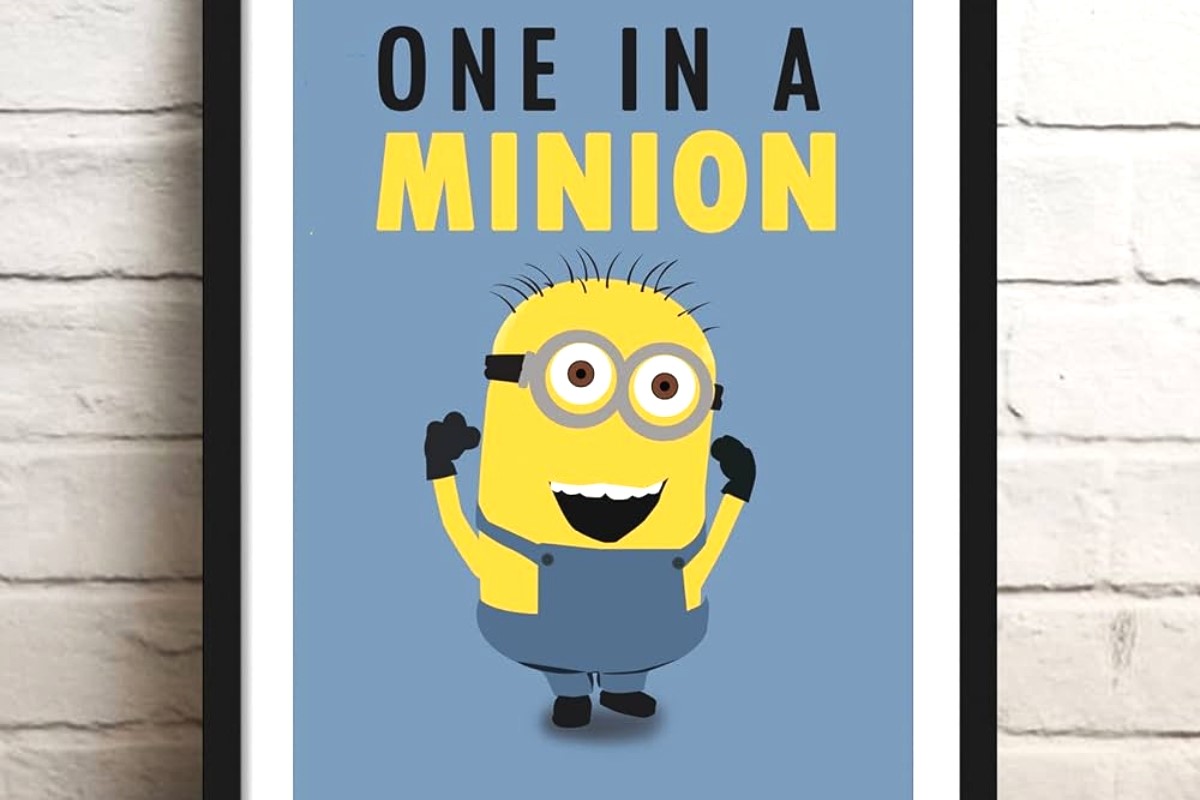
By: Dorotea Edge • Entertainment
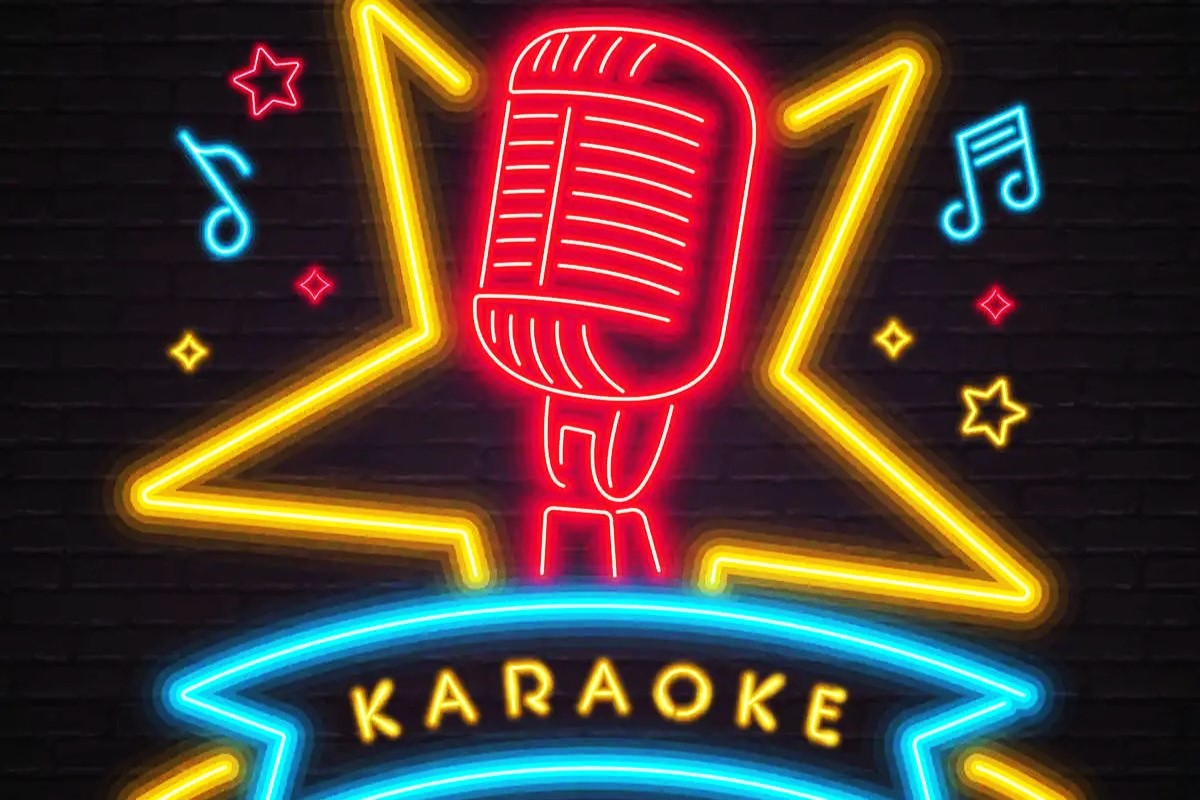
By: Emlynn Sturgeon • Entertainment
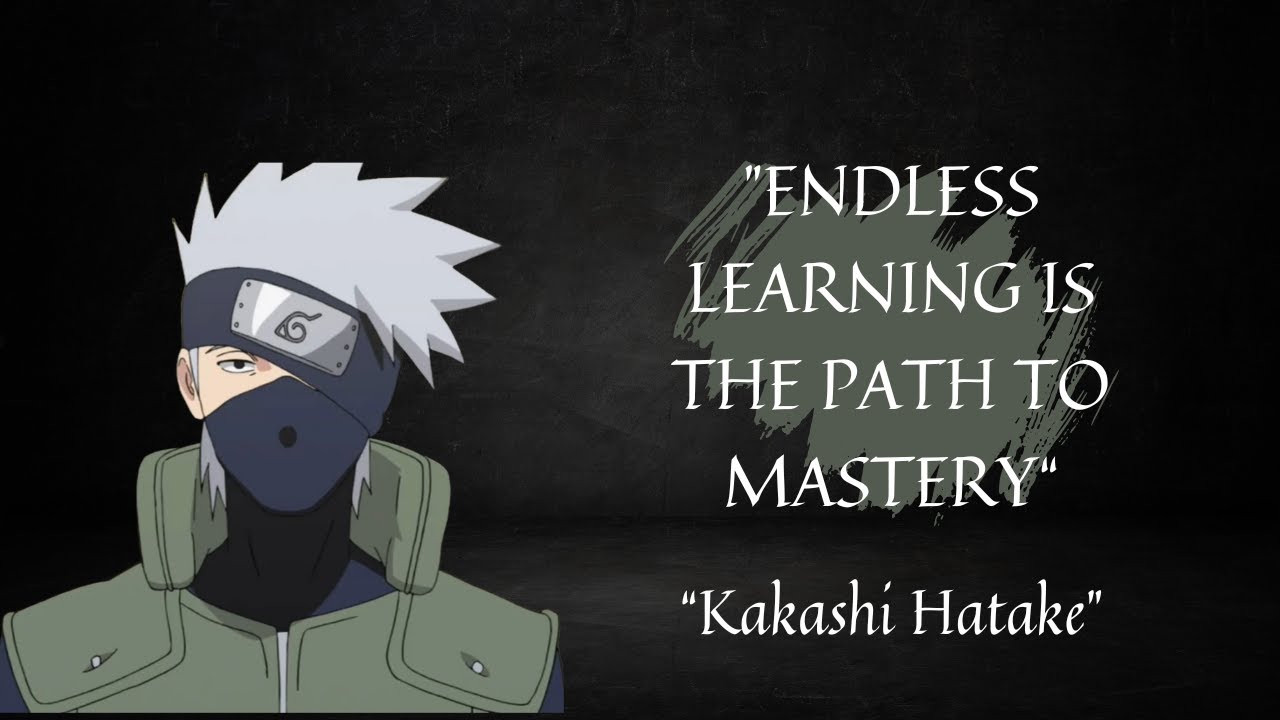
By: Adena Leos • Entertainment
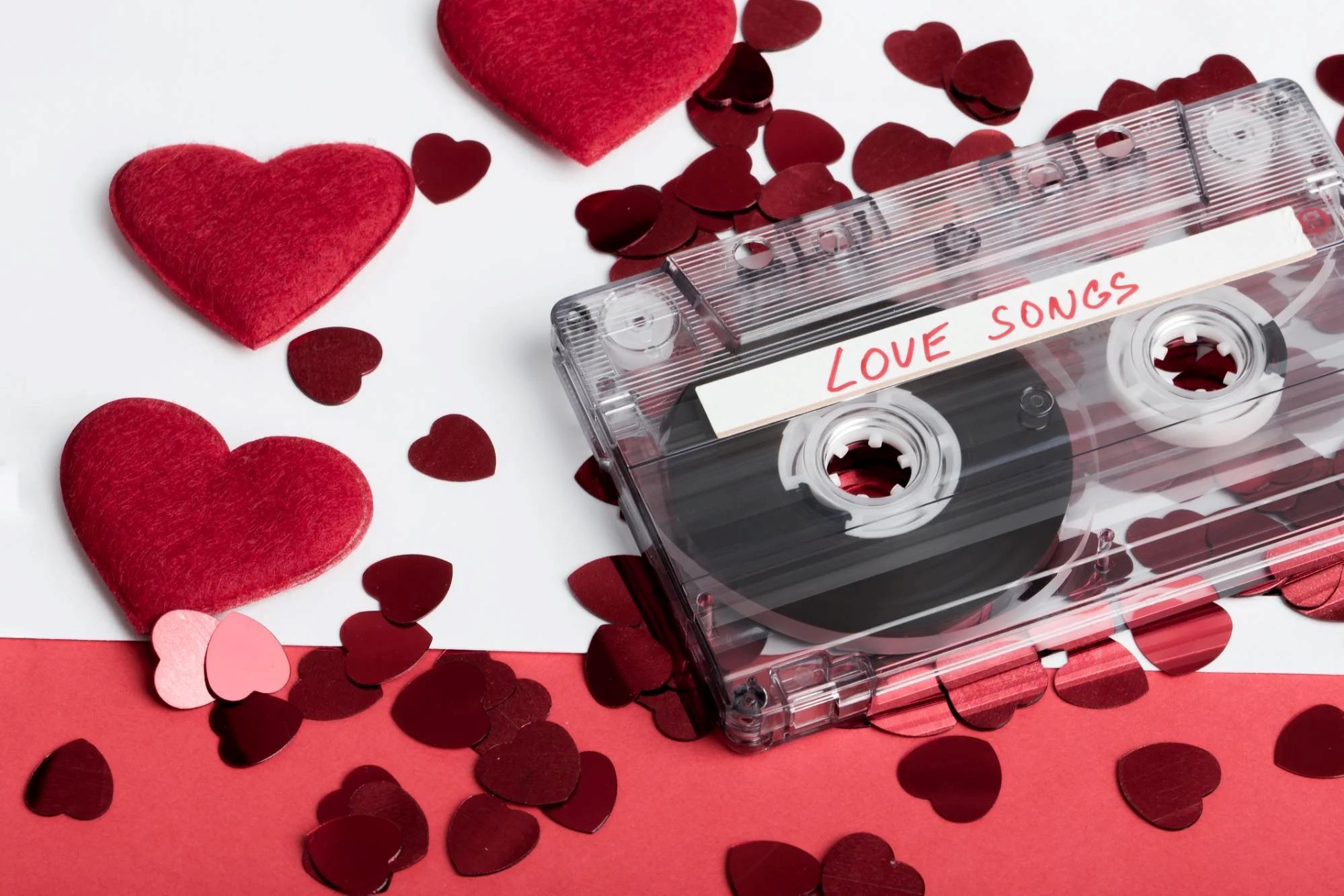
By: Savina Love • Music
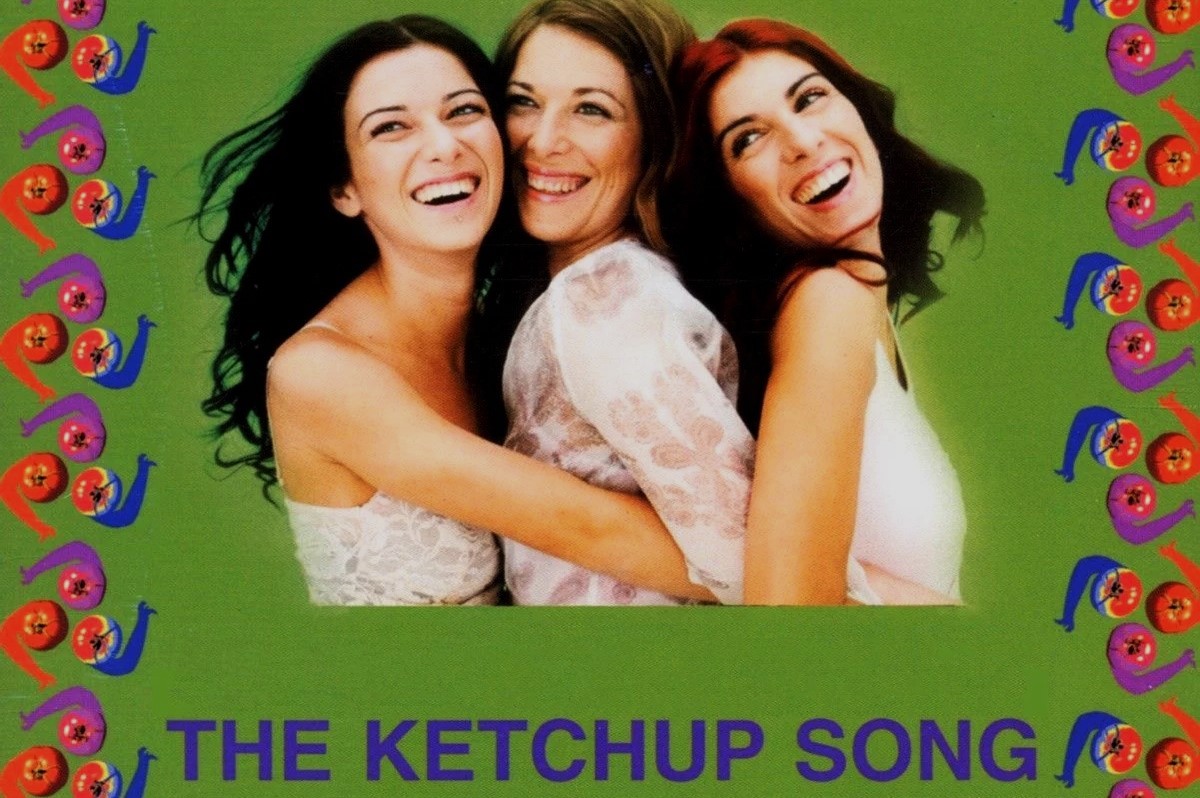
By: Jolee Forster • Arts and Culture
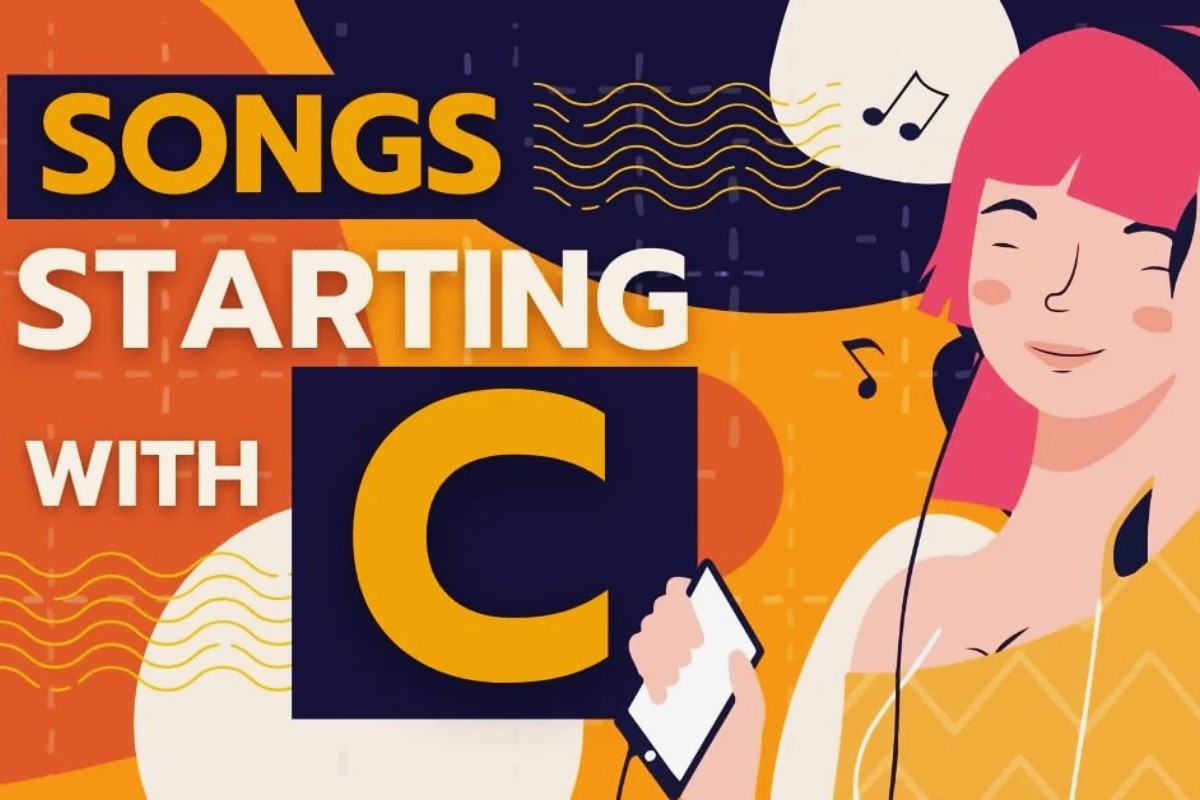
By: Lise Ngo • Music

By: Suzann Stetson • Music
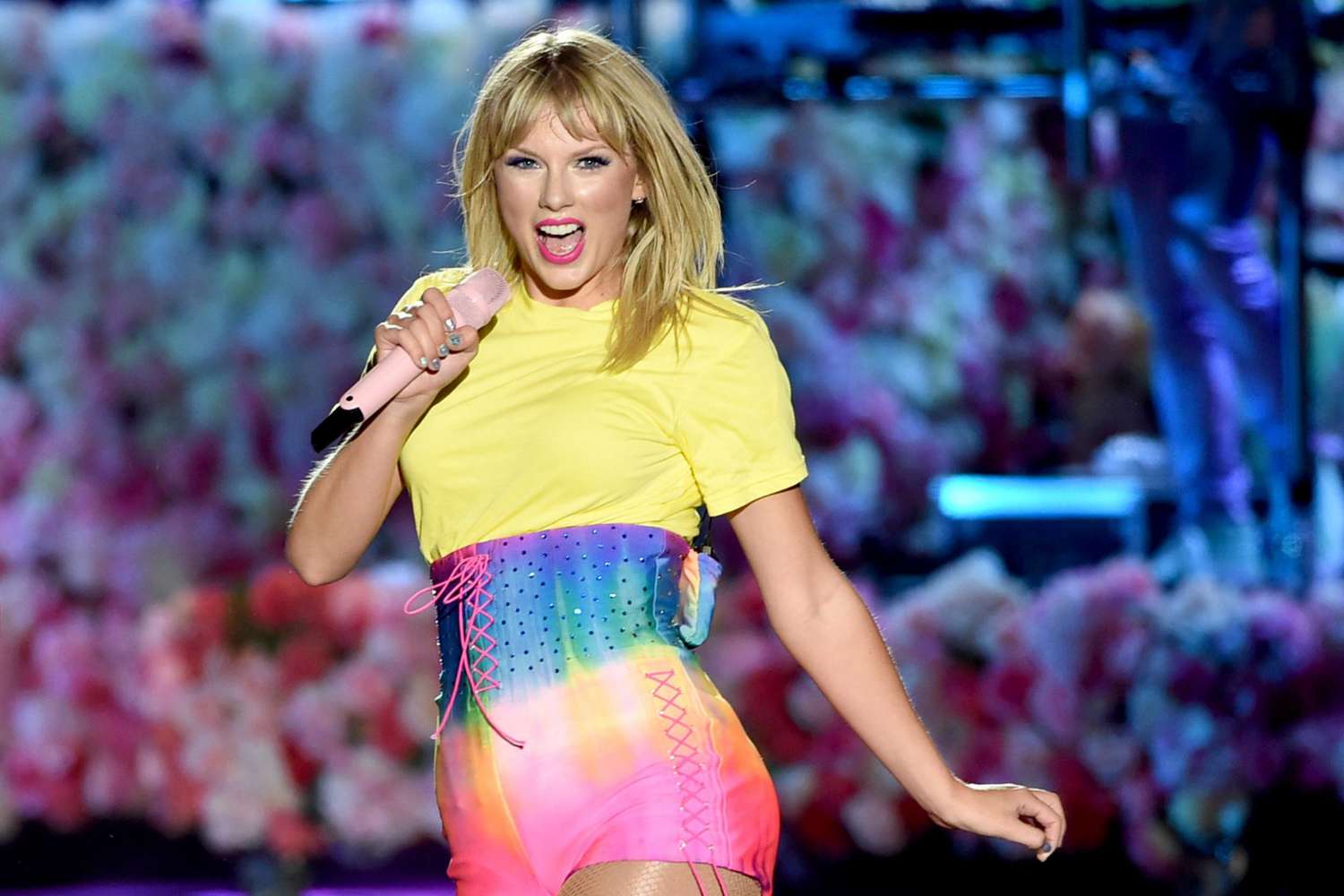
By: Alfy Sussman • Music

By: Lethia Mooney • Music
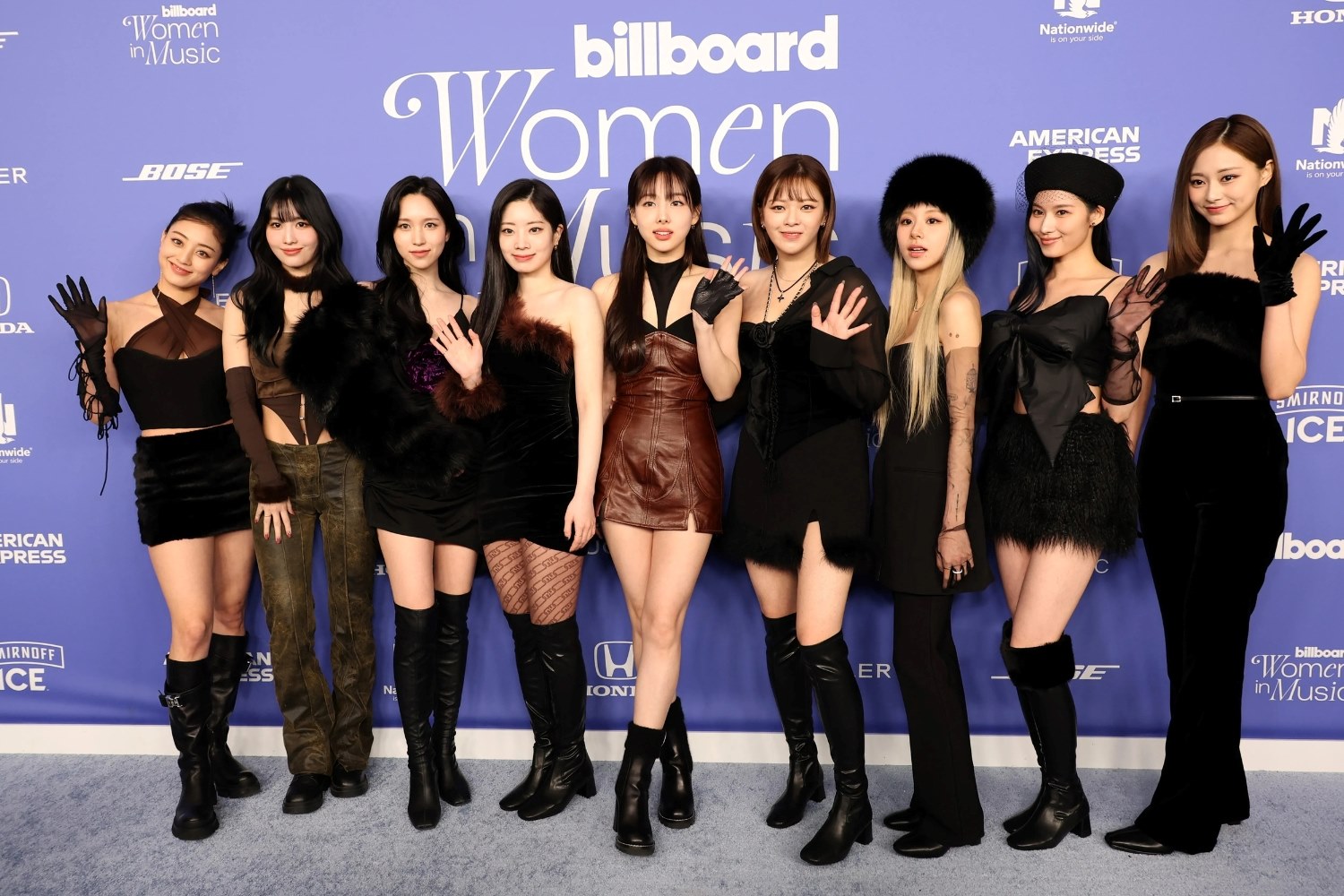
By: Eloisa Dukes • Entertainment
Please accept our Privacy Policy.
STORABLES.COM uses cookies to improve your experience and to show you personalized ads. Please review our privacy policy by clicking here .

- Privacy Overview
- Strictly Necessary Cookies
This website uses cookies so that we can provide you with the best user experience possible. Cookie information is stored in your browser and performs functions such as recognising you when you return to our website and helping our team to understand which sections of the website you find most interesting and useful.
Strictly Necessary Cookie should be enabled at all times so that we can save your preferences for cookie settings.
If you disable this cookie, we will not be able to save your preferences. This means that every time you visit this website you will need to enable or disable cookies again.
- https://noodls.com/music/how-to-quote-a-song/
Best quotes from great leaders
Empowering Minds, Inspiring Souls: Unleash Your Potential!
How to Quote a Song Lyric: Tips and Guidelines

Quoting song lyrics can add depth and emotion to any written work, whether it be an essay, a blog post, or a social media caption. However, it is important to properly cite the lyrics to give credit to the songwriter and avoid any issues with copyright infringement. In this step-by-step guide, we will walk you through the process of quoting a song lyric
Step 1: Choose the song and lyric
Start by selecting a song and lyric that best fits your content and resonates with your audience. Make sure to consider the message, tone, and theme of the lyric, as well as its relevance to your topic. Whether you are discussing love, heartbreak, or empowerment, there is a song lyric out there that can enhance your writing.
Step 2: Provide context
Before quoting the song lyric, it is essential to provide some context for your readers. This can be done by briefly explaining the song’s title, artist, and any relevant background information that will help your audience understand the meaning behind the lyric.
Step 3: Use quotation marks
When quoting a song lyric, it is crucial to use quotation marks to indicate that the words belong to someone else. This not only shows respect to the songwriter but also helps differentiate the lyric from your own writing. Enclose the lyric within double quotation marks (“”) to make it clear that you are borrowing someone else’s words.
Note: If the lyric is longer than four lines, it should be presented as a blockquote.
Step 4: Include the songwriter’s name
To properly give credit to the songwriter, it is important to include their name in the citation. This can be done immediately after the quoted lyric, using the format “Song Title” by Artist Name. Including the songwriter’s name not only acknowledges their creative work but also helps readers easily find and connect with the song.
By following these steps, you can effectively quote song lyrics in your writing, adding a touch of musicality and emotion to your work. Just remember to always give credit where credit is due and be mindful of copyright laws.
Table of Contents
Choose the Perfect Lyrics
When choosing lyrics to quote, it’s important to consider the context and message of the song, as well as its relevance to your own topic or theme. Here are some steps to help you choose the perfect lyrics:
- Think about the theme: Consider the main theme or topic of your article and look for lyrics that align with it. Whether it’s love, heartbreak, empowerment, or any other theme, finding lyrics that capture the essence of your message will make your quote more impactful.
- Consider the artist’s intention: Take into account the artist’s intention and the meaning behind the lyrics. Look up the song’s background and explore the artist’s interviews or statements to understand their perspective. This will help you ensure that the quote accurately represents the intended message.
- Look for memorable lines: Look for lyrics that are memorable and have a strong impact on listeners. Lines that are catchy, thought-provoking, or emotionally charged can make your quote more engaging and resonant with your readers.
- Avoid cliches: Try to avoid using lyrics that are overused or too generic. While some popular songs may have great lyrics, quotes from such songs may lack originality. Look for lyrics that are unique and add a fresh perspective to your article.
- Keep it relevant: Ensure that the lyrics you choose are relevant to your topic and add value to your article. The quote should enhance your message and provide insights or emotional connection for your readers.
Remember, selecting the perfect lyrics for a quote is subjective, and what may resonate with one person may not have the same impact on another. Trust your instincts and choose lyrics that truly speak to you and align with the purpose of your article.
Understand Copyright Laws
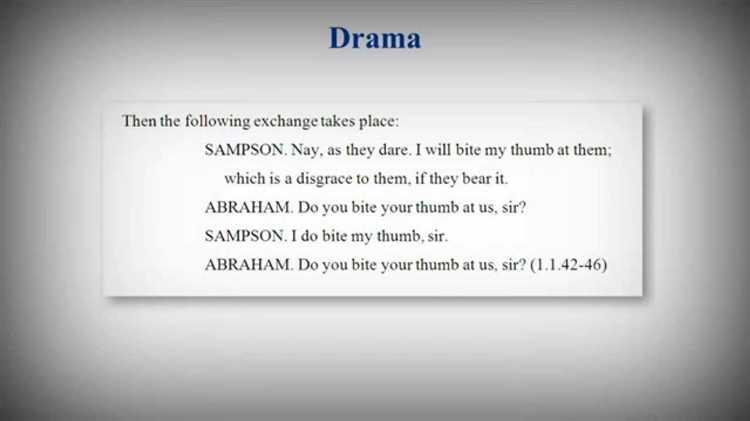
- Research Copyright Ownership: Before quoting song lyrics, it is important to determine who owns the copyright for the song. This information can typically be found by conducting a search on websites like the United States Copyright Office or by reaching out to the artist or their representatives directly.
- Familiarize Yourself with Fair Use: Fair use is a legal doctrine that allows for the limited use of copyrighted material without obtaining permission from the copyright owner. However, the use of song lyrics in your own work may not always qualify as fair use. It is important to familiarize yourself with the specific guidelines and limitations outlined by your country’s copyright law.
- Obtain Proper Licensing: If your use of song lyrics does not fall under fair use, it is important to obtain the proper licensing or permissions from the copyright owner. This usually involves contacting the music publisher and negotiating the terms for usage.
- Give Proper Attribution: When quoting song lyrics, it is essential to give proper attribution to the original artist. This includes mentioning the artist’s name, song title, and album (if applicable), as well as any other relevant information that will help readers identify the source of the lyric.
- Avoid Infringement: It is important to respect the rights of copyright owners and avoid infringing on their intellectual property. This means refraining from using song lyrics without permission or outside the bounds of fair use. Engaging in copyright infringement can lead to legal consequences.
Understanding copyright laws is crucial when quoting song lyrics. By researching ownership, familiarizing yourself with fair use, obtaining proper licensing, giving proper attribution, and avoiding infringement, you can navigate the legal aspects of using song lyrics in your writing.
Determine the Correct Format
When quoting a song lyric, it’s important to use the correct format to properly attribute the lyric to the artist and the song. There are a few different formats you can use depending on the citation style that you are following.
1. MLA Format:
In MLA format, you would typically use parenthetical citations within the body of your paper. The general format for citing a song lyric in MLA is:
- List the name of the song in quotation marks.
- List the name of the artist or band in parentheses.
- List the album or soundtrack title in italics.
- List the name of the label or publisher.
- List the year of release.
2. APA Format:
In APA format, you would use an in-text citation within the body of your paper. The general format for citing a song lyric in APA is:
For example: “Bohemian Rhapsody” (Queen, 1975).
3. Chicago/Turabian Format:
In Chicago/Turabian format, you would typically use footnotes or endnotes to cite your sources. The general format for citing a song lyric in Chicago/Turabian is:
- List the name of the artist or band.
For example:
1. Queen, “Bohemian Rhapsody,” A Night at the Opera (EMI, 1975).
By following the correct format for your citation style, you can ensure that you are properly and accurately quoting a song lyric in your work.
Include the Artist’s Name
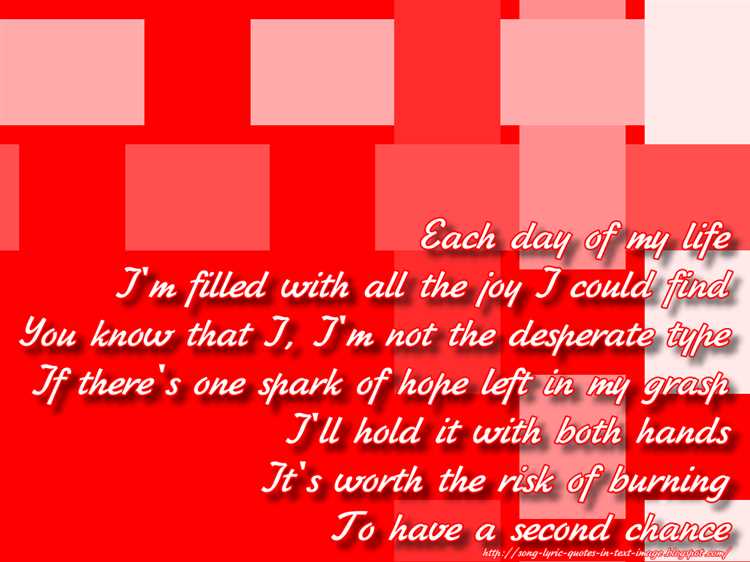
When quoting a song lyric, it’s important to include the artist’s name, as they are the original creator of the lyrics. This gives credit to the artist and shows respect for their work. Here’s how you can include the artist’s name when quoting a song lyric:
- Introduce the artist: Before quoting the lyric, mention the artist’s name. You can do this by simply stating their name or by adding some context about their work.
- Use quotation marks: Place quotation marks around the song lyric you are quoting. This sets it apart from your own writing and indicates that it is a direct quote.
- Cite the source: Provide information about the song you are quoting from, such as the album title, release date, or the streaming platform where it can be found. This helps readers to locate the original source if they want to listen to the song or find more information about it.
Here’s an example of how to quote a song lyric while including the artist’s name:
In this example, we have included both the song lyric and the artist’s name. We have also mentioned the album and the year it was released, providing additional context for the reader.
Remember, including the artist’s name when quoting a song lyric is essential for giving credit where it’s due and maintaining the integrity of the original work.
Add Proper Punctuation
Once you have selected the song lyric you want to quote and have determined it is copyright-friendly to use, it’s important to add proper punctuation when incorporating it into your writing. This helps to clearly distinguish the lyrics from the rest of your text.
Here are some tips on how to add proper punctuation when quoting a song lyric:
- Quotation Marks: Enclose the song lyric in double quotation marks. For example, “I wanna dance with somebody”.
- Italicize or Use Quotation Marks for Styling: Depending on your writing style guide, you may choose to italicize the song lyric instead of using quotation marks. If italics are not an option, quotation marks work just as well.
- Punctuation within the Lyric: If the original song lyric already contains punctuation marks, such as commas or exclamation points, retain them in your quotation. For example, “I’ve got the eye of the tiger!”
- End Punctuation: If the song lyric is a complete sentence, end the quotation with the appropriate end punctuation, such as a period or question mark. If the song lyric is not a complete sentence, leave it open-ended without any end punctuation.
- Ellipses: If you are omitting parts of the song lyric in your quotation, use an ellipsis (…) to indicate the missing text. However, be careful to not change the meaning or intent of the lyric by omitting essential words or phrases.
Remember, proper punctuation helps to maintain clarity and accuracy when quoting a song lyric. By following these guidelines, you can effectively incorporate song lyrics into your writing while still respecting copyright laws.
Use Quotation Marks or Italics
When quoting song lyrics in your writing, you have two options for formatting – you can use quotation marks or italics. Which option you choose depends on the style guide you are following and your personal preference.
If you choose to use quotation marks, enclose the lyrics within double quotation marks (” “). This is the most commonly used method and is recommended by the Modern Language Association (MLA) style guide. For example:
According to the song “Imagine” by John Lennon, “You may say I’m a dreamer, but I’m not the only one.”
If you prefer to use italics, you can format the song lyrics by italicizing them. This method is recommended by the American Psychological Association (APA) style guide. For example:
According to the song Imagine by John Lennon, “You may say I’m a dreamer, but I’m not the only one.”
No matter which formatting option you choose, it is important to be consistent throughout your writing. Stick to your chosen method for all song lyrics you quote in your article or paper.
Additionally, when using quotation marks or italics for song lyrics, it is important to include proper citation information. This includes the artist’s name, the song title, and the album or release it can be found on. You can include this information in a parenthetical citation or in a footnote, depending on the style guide you are following.
Provide Context or Explanation
When quoting a song lyric, it is important to provide some context or explanation to help your readers understand the significance of the quote. This can be done in a few different ways:
- Introduce the song and artist: Before quoting the lyric, provide the name of the song and the artist who performed it. This will give your readers some background information and help them connect with the quote.
- Explain the meaning: If the lyric has a deeper meaning or relates to a specific theme or event, take a moment to explain it. This will help your readers understand why you chose to quote that particular lyric and what it adds to your argument or story.
- Provide historical or cultural context: Some song lyrics are heavily influenced by the time period or culture in which they were written. If this is the case, provide some context to help your readers understand the significance of the quote in relation to the song’s historical or cultural context.
By providing context or explanation, you are not only helping your readers understand the quote better, but also showing that you have thoughtfully chosen the lyric and are using it purposefully in your writing.
Give Credit to the Song
When quoting a song lyric, it is important to give credit to the song and its original creator. This not only shows respect for the artist, but also acknowledges the source of the lyric.
Here are a few guidelines to follow when giving credit to the song in your quotation:
- Include the Song Title: Begin by mentioning the title of the song in which the lyric is from. This helps readers identify the song and creates a proper context.
- Provide the Artist’s Name: After mentioning the song title, include the name of the artist or band who performed the song. This adds credibility and acknowledges the original creator.
- Use Quotation Marks or Italics: To indicate that you are quoting a specific lyric from the song, use either quotation marks or italics. This helps differentiate the lyric from the rest of your text.
- Credit the Album: If possible, include the name of the album on which the song appears. This provides more information about the song and helps readers locate the original recording if they are interested.
Here is an example of how to properly give credit to a song lyric:
Remember, giving credit to the song is essential when quoting a lyric. It ensures that the original artist is recognized for their work and helps readers connect the lyric to the song it belongs to.
Question and answer:
What is the purpose of quoting a song lyric.
The purpose of quoting a song lyric is to reference and give credit to the original artist or songwriter, and to enhance your own work with the power and emotion of the lyrics.
How do I properly format a song lyric quote in my writing?
When formatting a song lyric quote in your writing, you should use quotation marks around the lyrics and include the name of the artist or songwriter, the song title, and the album it is from. You should also follow any specific formatting guidelines provided by your instructor or style guide.
Can I quote a song lyric without permission?
In most cases, quoting a song lyric in your writing falls under fair use, which means you can do so without obtaining permission. However, it is important to use only a small portion of the song and to provide proper attribution to the artist or songwriter.
What are some examples of properly quoting a song lyric?
Examples of properly quoting a song lyric include: “I’m a survivor, I’m not gonna give up” (Beyoncé, “Survivor”, Destiny’s Child) and “Imagine all the people living life in peace” (John Lennon, “Imagine”, Imagine). These examples show the use of quotation marks, the artist or songwriter’s name, and the song title.
Of Monsters and Men – Little Talks
Leave a Reply Cancel reply
Your email address will not be published. Required fields are marked *
Save my name, email, and website in this browser for the next time I comment.

IMAGES
VIDEO
COMMENTS
To cite a song accessed through an online streaming service, list the performer (or group) as author, the song title in quotation marks, the name of the site in italics, and the URL where the song can be found. Omit "the" from a band name, e.g. "Beatles," not "the Beatles.". If relevant, use a timestamp to indicate a specific part ...
Block Quotations: For lengthier lyrical segments (typically four lines or more), set them apart as block quotations to emphasize their significance, help with visual clarity, and signify a deeper level of analysis. Indent the entire block from your main text. Consider this example: They took all the trees. Put 'em in a tree museum.
Format a quotation of song lyrics the same way you would format a quotation of poetry. If the quotation consists of fewer than four lines, run it into the text, placing quotation marks around the lines and separating the lines from each other with a forward slash with a space on either side of it. Bob Dylan famously sang that " [t]he answer ...
4. Provide the name of the album and medium. After the title of the song, start a new sentence with the word "On" and then provide the name of the album in italics. If you're citing a recording (rather than sheet music), include information about the medium (typically CD or LP).
Learn how to properly quote and cite a song, including lyrics, in your academic or professional writing. Find out the correct format, style, and guidelines for citing songs in various citation styles such as MLA, APA, and Chicago.
Step 2: Identify the Album or Source. Once you have the lyrics to the song you want to quote, you need to identify the album or source from which it comes. This information is essential for creating a proper citation. Before identifying the album or source, make sure the lyrics you have are accurate.
If you cite song lyrics from a CD you listened to, you might simply refer to the song in your essay: "You say you got a real solution," the Beatles sing in "Revolution 1.". You can then provide a works-cited-list entry for the album that contains the song. Follow the MLA format template: list the name of the performer or band as the ...
To one who'll watch over me. (Gershwin & Gershwin, 1926, stanza 6) If you are quoting lyrics from a booklet, replace the track number with the booklet page number (as the words contained in CD booklets do not always correspond to what is sung on an album): Janey, a letter came today. And a picture of you.
Use quotation marks: When quoting song lyrics, you should always enclose them in quotation marks. This helps differentiate the lyrics from the rest of your writing and indicates that they are someone else's words. Include the title of the song: It is important to include the title of the song in your quote.
When how to quote a song in an essay or how to quote a song lyric in an essay, using signal phrases such as "According to [Artist Name]" or "[Artist Name] sings" can smoothly introduce the quote into your narrative. This method not only credits the original artist but also prepares the reader for the integration of external content.
Classical music isn't typically arranged into an album, per se, but the general rule still applies. The shorter songs and movements would be in quotation marks. If it is a full length longer composition, like a full sonata, concerto, or opera then use italics for titles indicating the full work. For example: The aria "Der Hölle Rache" is ...
In the absence of a style guide, the general rule is to use quotation marks for song titles and italicize CD or album titles. Don't use underlining in place of italics unless you are using a typewriter or writing titles by hand. This article explains the proper formatting of song titles in written documents and includes examples.
In this post, you will learn how to cite a single song or track reference. In general, each APA Style reference has an author element, date element, title element, and source element. For a song or track reference, the author of the work is usually the recording artist, which may be an individual or group. If a music artist prefers to use their ...
Here is a step-by-step guide on how to quote lyrics correctly and legally: Identify the song: Make sure you know the title of the song and the name of the artist or band that performed it. Determine the purpose: Decide if you are quoting the lyrics for educational, informational, or creative purposes.
When incorporating lyrics into an essay, put the lyrics inside quotation marks. Short quotations can be integrated into a sentence, such as, "In the song 'Hey Jude,' the Beatles sing…" followed by the lyrics in quotation marks. Long quotations, or those that are four lines or longer, need to be set off in a block quote, where you ...
If you're quoting song lyrics to add flavor and atmosphere or to progress the thinking in your stories, you may want to…. Here are four key takeaways: Whoa. I felt a little defeated. I was ...
Start the quotation on a new line, with the entire quote indented 1/2 inch from the left margin while maintaining double-spacing. Your parenthetical citation should come after the closing punctuation mark. When quoting verse, maintain original line breaks. (You should maintain double-spacing throughout your essay.)
5. Be mindful of the tone and message: When quoting song lyrics, pay attention to the tone and message conveyed by the lyrics. Make sure that the chosen lines align with the overall message and theme of your writing. By selecting lyrics that resonate with your work, you can create a stronger and more cohesive piece.
To quote the lyrics in MLA format, mention the artist's name in parenthesis. For example, "In the lyrics to "The Show Must Go on" (Queen), it states that…". This is all you need to do. However, when you use APA or Harvard format, there are slight differences. You must write the name of the singer, date, and track number in ...
Step 1: Selecting the Song. Selecting the perfect song to quote is a crucial first step in the process. The song you choose should resonate with the theme, mood, or message you aim to convey in your writing. Consider the emotional impact you want to achieve and the specific lyrics that encapsulate that sentiment.
When quoting a song lyric in your essay, it is important to use quotation marks and provide proper citations to give credit to the original artist and songwriter. Here are the steps to follow: Place the lyric in quotation marks: Start by enclosing the song lyric you are quoting in double quotation marks.
He was a hot house flower to my outdoorsmen. Our maladies were such we could not cure them. And so a touch that was my birthright became foreign. [Chorus] Come one, come all, it's happenin' again ...
In this step-by-step guide, we will walk you through the process of quoting a song lyric. Step 1: Choose the song and lyric. Start by selecting a song and lyric that best fits your content and resonates with your audience. Make sure to consider the message, tone, and theme of the lyric, as well as its relevance to your topic.